

European
Nuclear Society
e-news
issue 36: May 2012
For many citizens nuclear energy is used to generate the electricity that powers our homes, hospitals, schools and industry. Others immediately associate it with non-civil applications. But how many citizens know that medical isotopes are used to treat and save the lives of thousands of patients worldwide every day? How many realise that nuclear technology is used to improve agricultural yield and kill harmful bacteria and viruses that would otherwise contaminate our food? Limited knowledge of the multiple applications of nuclear science and technology prevents people from appreciating the vital contribution that they make to man’s health and wellbeing. It also means that much of the work and achievements of the nuclear science community remain unseen, unheard, unheralded. There is another highly specialised field of nuclear research and development - one with potentially far-reaching consequences for the future of mankind - that most people are probably even less aware of.
Long before astronaut Neil Armstrong uttered those famous words “That’s one small step for man, one giant leap for mankind” as he stepped onto the surface of the Moon, man had always dreamt of exploring space; of crossing that final frontier and making contact with other potential life forms. But is space exploration and colonisation of far flung areas of the cosmos a justifiable enterprise and a realisable objective? Is it worth investing energy, time and money in long-term? Or is it a Holy Grail, tantalisingly out of reach?
I recently read a fascinating paper on nuclear technology and space exploration written by the Secretary General of ENS, Jean-Pol Poncelet. I would like to share with ENS NEWS readers some of the thought-provoking points that he made. As a former Director of Strategy and External Relations at the European Space Agency (ESA) and Senior Vice President at AREVA Jean-Pol highlighted, with authority, how long distance space travel is impossible without the availability of a vast and totally reliable source of energy – nuclear energy. According to which orbit one uses as a starting point, the planet Mars is only approximately 100,000,000 km from Earth and a spacecraft can reach it in around 200 days. Although in space travel terms 200 days is just a sprint compared to the marathon of travelling for months or even years to reach a distant outpost of our galaxy (a manned mission to nearby Mars and back, e.g., takes at least a year to complete), the dilemma still remains - how can a spacecraft store the vast amount of energy needed to transport it to Mars and back – or even further afield?
The answer is to use a small fission reactor to produce the MWs required to enable orbit transfer, interplanetary flight and the sustainable management of space stations. This source of energy can also power the robotic probes and rovers that are needed to conduct experiments on Mars and other planets. Other energy sources simply don’t make the grade: the suitability of traditional fuel types is limited because of the vast quantities that would have to be stored on-board to enable long-distance travel and because of their inherent volatility. The intensity of solar energy diminishes considerably as the spacecraft travels away from the sun, preventing the creation of photovoltaic electricity.
Once again, the answer is nuclear, which has an established track record and solid credentials when it comes to space travel. Many of the spacecraft used by NASA space missions have been equipped with radioisotope thermoelectric generators (RTGs) and radioisotope haster units (RHUs). These RTGs were vital to the spectacular success of the recent Cassini-Huyghens joint NASA/ESA mission to Saturn and Titan. It is worth remembering, stresses Jean-Pol, that the Cassini spacecraft had more than 30 kg of non-weapons grade plutonium 238 on-board. A fission reactor can achieve a power range of between 1-10 MWe.
Of course, because we are talking about nuclear energy, the question of safety is paramount and a key to gaining public acceptance. Once citizens are more aware of nuclear technology’s role in space travel they need to be reassured that it is safe for man, the environment and outer space. Only then will this specialised application of nuclear technology receive the public acceptance it deserves.
Europe is a world leader in nuclear science and technology and a credible partner to Russia and the US in large-scale, long-term collaborative space ventures, such as the International Space Station (ISS) that cost $100 billion to finance. The expertise exists and is ready to be tapped if the political will is there. ESA and the European nuclear industry are at the forefront of this cutting edge nuclear technology. Without the mobilisation of Europe’s decision-makers, EU member states and the whole nuclear community, this highly innovative nuclear technology will never be fully exploited and crossing the final frontier of space might continue to elude us.
I would like to invite any readers with experience or an interest in nuclear technology and space exploration, or with an opinion to give on the subject, to contact me. I will tell your story and recount those views.
Coming back to earth, ENS NEWS N° 36 kicks off with the traditional Word from the President piece. This time Marco Streit gives us his personal appraisal of what has been a very busy first quarter of 2012 for the nuclear community. This is followed by a first glimpse of a new event that ENS is launching entitled: ENC 2012 Careers, which uses ENC 2012 as a springboard for bringing employers from the nuclear sector together with potential employees to discuss future career prospects.
The ENS Events section features information on three very important upcoming ENS conferences – TopFuel 2012, ENC 2012 and ETRAP 2013 – and invites readers to book their places at the conference debating table and send in their technical papers and abstracts.
A packed Member Societies section includes a summary of the French Nuclear Society’s (SFEN) Annual Convention, which included a strong pro-nuclear address from France’s Prime Minister, François Fillon, as well as a range of reports on key nuclear issues, prize awards and events organised by the Austrian, Belgian, Hungarian Slovakian, Slovenian and Spanish nuclear societies.
The usual injection of youthful dynamism (not that the more mature among us are not dynamic, of course!) is provided in the Austrian Young Generation section by a YGN member’s personal perspective on the PIME 2012 conference that took place in February, in Warsaw.
The Corporate Members section spotlights a ground-breaking partnership agreement that was recently signed by Ansaldo Nuclear, in Italy, and the companies Nuvia and Cammell Laird; a report on the world’s first movie shot in an operational NPP and news of the winner of this year’s Professor van Geel Prize, which is awarded by SCK-CEN in recognition of an excellent paper written about an innovative new area of research.
The European Institutions section provides a status report on the work of the Implementing Geological Disposal of Radioactive Waste Technology Platform (IGD-TP) that was introduced by the European Commission to promote research into the suitability of the long-term deep underground disposal of high-level radioactive waste
Finally, the ENS World News section has an introduction to the work of the National Nuclear Laboratory (NNL) in the UK, which provides its expanding customer base with a range of specialised nuclear technology services.
|


What a busy and memorable first quarter of the year it has been. The energy policies of countries all over the globe have been put in the spotlight and openly discussed against the backdrop of the first “anniversary” of the Fukushima accident. During this time, ENS successfully organised several conferences, including RRFM and TopSafe, in Prague and Helsinki respectively, as well as PIME in Warsaw, where my first official duty as ENS President was to open this inspiring conference.
Over the years, PIME has proven to be an invaluable focal point for communicators from all sectors of the nuclear community and all corners of the globe, and this was once again the case in February this year. Many nuclear communicators congregated in Warsaw, the birth place of Marie Sklodowska-Curie, to exchange their views and experiences - especially those during the days, weeks and months following Fukushima. There were two main lessons that I learned during the conference:
Firstly, when it comes to reporting on science, especially nuclear matters, the German media behave differently to their counterparts in other countries.
Secondly, scientists and communicators should come together more often to talk about the challenges and problems that they face, as well as to identify opportunities for communicating the facts.
For me as a scientist it is important to understand how the media work, and as a communicator it is very important to understand the challenges of technology.
Another highlight of the PIME conference was the technical visit to Poland’s National Centre for Nuclear Research (NCBJ), in Swierk, where the MARIA research reactor is located. Prof. Dobrzynski, the Head of NCBJ, showed participants the MARIA reactor and the radioactive waste management disposal facilities. He also gave participants a detailed insight into the nuclear research and teaching programme on offer in Poland.
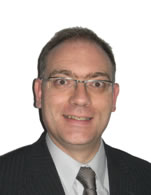 | During recent months it has been very interesting to observe how the energy policy of different countries has evolved. On the one hand, the impact of the Fukushima accident in countries where new build projects are up and running, like UK, Finland, UAE, Poland, has been minimal. Their new build plans continue unaffected. On the other hand, however, politicians in Germany and Switzerland decided to phase-out nuclear without already having a proper and necessary replacement for it. They speak easily about importing energy, but without knowing were all this energy will come from, how it is produced and how it will be transported to their respective countries. |
And last but not least, there have been significant developments in Japan itself. The Japanese people suffered most from the tragic accident that took place one year ago. They are now suffering from an energy deficit and the need to import a lot of fossil energy sources, which makes life much more difficult and expensive for Japanese citizens. This problem is not reported on by the media, and nor are the huge efforts that have been made in Japan to clean up the contaminated land and to decommission the affected reactors.
My wish for the future is that we, the nuclear community, find ways of communicating more effectively to people the facts about nuclear because, as the famous American science fiction writer HP Lovecraft once said: “The oldest and strongest emotion of mankind is fear, and the oldest and strongest kind of fear is fear of the unknown.”
Marco Streit
President of ENS
http://www.euronuclear.org/e-news/e-news-36/enc-career-event.htm


As the largest European society for professionals active in nuclear science and industry, ENS had been discussing for some time how it might exploit the advantages it offers as a catalyst for bringing together employers and employees in the nuclear sector. It recently decided to use ENC 2012 in Manchester - which this year is expected to attract more than 800 participants and will feature an extensive parallel Industry Exhibition that covers over 2000 m2 - as a springboard for launching an event entitled ENC 2012 Careers. ENS firmly believes that combining those two events will enable all participants to fully exploit the synergies that exist between the ENC 2012 Careers and ENC 2012.
ENS 2012 Careers particularly targets young professionals with between 2 and 7 years of experience, as well as students with a Master or PhD in engineering related subjects who would like to engage in a career in the nuclear sector.
ENC 2012 Careers will take place on 9 & 10 December 2012, at Manchester Town Hall, Manchester, UK. The objective of this recruitment event is to bring leading companies active in the nuclear sector into contact with talented young professionals. It is supported by the City of Manchester and organised in conjunction with the ENS–Young Generation Network, WiN (Women in Nuclear) Europe and The Nuclear Institute, in the UK.
|
|
Phase I: Plenary 12:30 – 13:30 |
Walking Lunch with opportunity for contacts at information tables |
Phase II: Interviews |
|
18:30 Invitation of all participants to the ENC 2012 Welcome Cocktail |
|
Monday 10 December 2012 |
|
Phase II: continued |
|
ENS and its organising partners will soon start rolling out the promotion for this event. If you would like to obtain more information about the event please contact Kirsten Epskamp at the ENS office (Kirsten.Epskamp@euronuclear.org).
http://www.euronuclear.org/e-news/e-news-36/TopFuel2012.htm


TopFuel 2012 will take place from 2 – 6 September 2012 in Manchester, UK.
The TopFuel 2012 programme revolves around a combination of plenary presentations and technical tracks on
Operation and Experience
Transient Fuel Behaviour
Design and Materials
Modelling and Analysis
Spent Fuel Storage and Transportation
The programme and more information is available on the TopFuel 2012 Conference Website: www.topfuel2012.org.
http://www.euronuclear.org/e-news/e-news-36/ENC2012.htm


ENC 2012 provides a platform for the nuclear science community to share their experience and to learn about the latest developments going on in nuclear research and their practical applications. It will furthermore exploit synergy among scientists, industry representatives, policy-makers and citizens on wider societal issues that impact upon how the nuclear science community carries out its work.
ENS and the ENC 2012 Programme Committee are now calling for abstracts in the following areas:
Reactor technologies
The fuel cycle
Plant operations and safety
New Build
End of Use management
Life science applications
Non-power industrial applications
Education, training and knowledge management
Nuclear in the civil society
We welcome both oral and poster submissions. If you wish to share your knowledge and take part at this prestigious event, please submit your abstract by 15 May 2012.
The abstracts received will be peer reviewed under the auspices of the ENC 2012 Programme Committee.
Deadline for abstract submission: 15 May 2012
Notification of authors: 30 June 2012
Deadline for full paper submission: 31 October 2012
Deadline for submission of PowerPoint presentations: 23 November 2012
Conference: 9 - 12 December 2012
Conference Proceedings with reference number ISBN 978-92-95064-14-0 will be published on the website of the European Nuclear Society and on www.enc-2012.org
ENC 2012 Silver Sponsor
organised in collaboration with
 |
http://www.euronuclear.org/e-news/e-news-36/ETRAP2013.htm


13 - 15 March in Vienna, Austria
To fully benefit from the peaceful uses of ionising radiation that are found in industry, medicine, agriculture and research, and nuclear power generation, both people and the environment need to be protected. Education and training in radiation protection is therefore essential to building and maintaining the competent workforce that is necessary for establishing and maintaining the safe and well-regulated working environment that is demanded by modern society. The importance such of education and training has been acknowledged for many years, and a wide range of programmes and initiatives have been established at the national, regional and international level.
ETRAP 2013 provides a forum for decision makers, regulators, educational and training providers and practitioners, researchers, radiation protection experts and persons from international organizations to discuss the current state of the art in education and training in radiation protection. The conference aims to identify current trends and good practices in the area while looking to the future so that society can continue to benefit from the many uses of ionizing radiation.
Contributions are particularly welcome on the following topics related to education and training in radiation protection:
Harmonization of terminologies and definitions, taxonomies, learning outcome descriptions, comparison of ECVET/EQF/ECTS and other systems of accreditation of continuous professional development
Efficiency and effectiveness of training: measuring tools, key performance indicators, how is the overall radiation protection culture improved by E&T, what are other factors influencing work floor behaviour
Regulatory aspects, accreditation and certification processes, (inter)national infrastructure for E&T, development of national strategies
(Inter)national collaborations and networks, (inter)regional approaches and collaborations
Sector specific training needs: medical, nuclear, industrial, NORM, other
Tools and resources, methods of delivery, introduction of modern learning tools
Mechanisms to systematically update E&T courses: incorporation of research findings into the E&T curriculum
Feedback from experience, including incidents and accidents, into radiation protection E&T
Evolution in training contents, introduction of ethical aspects, communication and soft skills, …
Attracting the young generations involvement
Public education/communication on radiation effects and radiation protection
We welcome both oral and poster submissions. If you wish to share your knowledge and insights with regard to education and training in radiological protection, please submit your abstract by 30 September 2012.
More information on ETRAP 2013 is available at www.etrap2013.org
ETRAP 2013 Conference Secretariat
and:
supported by:
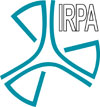 |
|---|
http://www.euronuclear.org/e-news/e-news-36/sfen.htm

On 8 and 9 March, the 2012 Annual Convention of SFEN (the French Nuclear Society) took place in Paris, at the Maison de la Chimie. Over 500 people attended the event, including SFEN members, industry leaders from France and a number of other countries (e.g. Germany, Belgium, the US and China), senior politicians, officials from the European Commission, regulators, academics and the media.
The Annual Convention of SFEN provides an opportunity to debate the main scientific and technological developments and issues driving the nuclear agenda, primarily in France but also globally. This year’s event highlighted the need to apply rational and scientific analysis as a counterbalance to the emotions, fears and misinformation that have characterised the polarised and politicised debate about the future of nuclear energy since the accident at Fukushima. Here is a summary of the main topics that were under the debating spotlight and of the conclusions drawn.
In his opening address, Luc Oursel, CEO of AREVA and President of SFEN, emphasised how the nuclear science community must benefit from the credibility that it has with the public and communicate science effectively in order to dissipate the fears of citizens that have intensified since Fukushima. It must also underline how the fundamental safety of the French nuclear industry has been endorsed following the rigorous stress tests procedure and dispel the inaccurate and partisan view that Fukushima has somehow “spelled the end for nuclear energy.” The first speaker to address the delegates was Akira Omoto, Commissioner of JAEC (the Japanese Atomic Energy Commission). He provided a detailed status update of on-site and off-site remedial action that has been taken - |
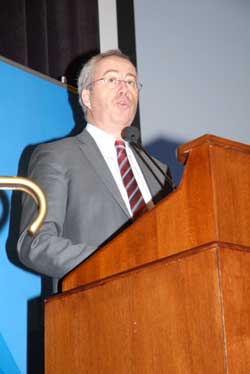 |
and is still being taken - in Japan. This includes the severe accident analysis that JAEC has carried out, analysis of reactor pressure level containment, the prevention of residual heat damage, the removal of caesium, the monitoring of radiation spill-over into the ocean and the issue of the radioprotection of employees. JAEC also coordinated with the local authorities the work that was carried out to decontaminate residential areas.
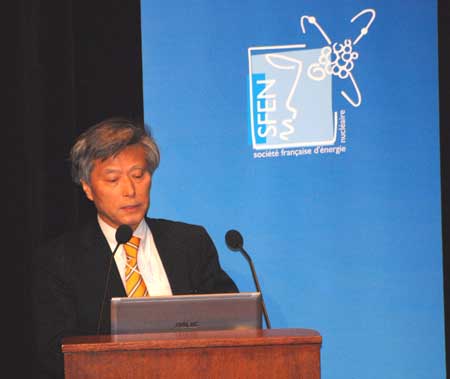
Mr. Omoto stated that 27 lessons had been learned from the accident. Among these were the need for enhanced design to increase resistance to natural disasters (including a “tsunami probabilistic hazard study”), increased black-out prevention, improved severe accident management capability, improved education and training for nuclear engineers and increased communication with the public.
After Japan, the attention switched to France. Dominique Minière, Director of EDF’s Nuclear Production Division, outlined the complementary safety evaluations (ECS) that EDF is carrying out at France’s nuclear power plants at the request of the ASN, France’s national regulatory authority. These evaluations are in addition to the standard ten-yearly reviews (“revues décénnales”) required by law and concentrate primarily on robustness of design, crisis management capability, resistance to natural disasters, the prevention of loss of power and heat sink and exceeding current reference levels.
Mr. Minière also gave an overview of the role and modus operandi of the FARN (Rapid Nuclear Action Force), the rapid intervention force that would intervene in France in the event of a nuclear accident.
Philippe Knoche, a member of the Board of Directors of AREVA then presented the latest information about the ECS carried at by AREVA in response to Fukushima. Complementary testing at AREVA facilities was carried out both within and beyond accepted reference levels, with special emphasis on controlling the temperature of spent fuel pools and the critical cooling of reactor chambers under extreme circumstances. AREVA has decided that safety at all its handling and storage facilities will be enhanced as of 2013. A total of 120 million Euros will be invested in further studies, especially additional seismological analysis and earthquake protection measures. All plants that do not conform to the new reference levels will be upgraded.
The lessons to be learned from Fukushima, inevitably, provided an added political dimension to the Annual Convention, as witnessed by the presence of France’s Prime Minister, François Fillon. Mr. Fillon delivered a lengthy speech extolling the virtues of nuclear energy as a vital component of France’s economy and of Europe’s low-carbon energy future. After reiterating France’s total support and solidarity for Japan following the accident, Mr. Fillon stressed “the historic and strategic commitment that has enabled France to develop its industry into what it is today” - an industry that provides 78% of France’s electricity output, employs almost 500,000 people and is a considerable economic asset for the nation. He dismissed the notion of withdrawing from nuclear energy as “an aberration”, “absurd” and “nonsensical”, and added that extending the operational lifetime of France’s nuclear power plants would be an “expensive but necessary investment.”
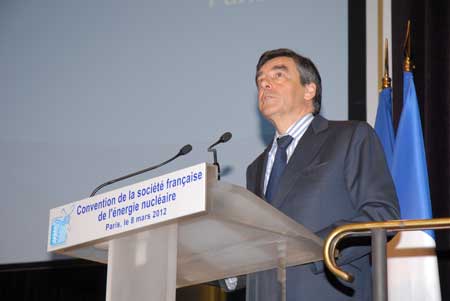
After this laudation of nuclear energy, AREVA and EDF joined forces to present a detailed safety analysis of the EPR. Bertrand de l’Epinois, Director of Safety Standards at AREVA and Jean-Luc Forêt, Deputy Director of EDF’s Nuclear Engineering Division (CNEN), stressed how the EPR’s enormous water reserves and supplementary back-up cooling measures make it particularly well designed to ensure critical cooling in the event of an accident. Similarly, EPRs have two different kinds of diesel generators at their disposal, housed in two different buildings, in order to ensure back-up power at all times. The EPR is also equipped with advanced depressurisation and residual heat evacuation functions and its design concept prevents the likelihood of a hydrogen explosion occurring. Nevertheless, in spite of the EPR’s excellent safety profile, certain modifications to the reactor at Flamanville will be made in response to Fukushima.
The next speaker was Laurent Stricker, Chairman of the World Association of Nuclear Operators (WANO), whose mission is to help maximise safety and operational performance at all nuclear power plants worldwide. Mr. Stricker stressed the collective responsibility of operators, stipulating that individual responsibility lies at the national level and collective responsibility at the international level. Following Fukushima, WANO has extended its scope from “prevention” to “prevention and mitigation” and has put forward a number of recommendations for operators, including improving real-time communications, upgrading emergency response plans and carrying out regular peer reviews.
Next it was the turn of the regulatory authorities to provide their expert analysis of the ECS and of the need to redefine safety reference levels. Sophie Mourlon, Deputy Director General of ASN and Caroline Lavarenne, Deputy Head of Systems and Risks at the IRSN (France’s National Institute for Radioprotection and Nuclear Safety), focused on the ECS that have been carried out at 150 nuclear facilities in France. Ms. Mourlon highlighted the main conclusions drawn by the ASN in a report they have published on the tests carried out by EDF and AREVA. Among the conclusions that the ASN and the IRSN reached was the fact that while most facilities satisfy accepted safety and radioprotection reference levels, it remains to be seen whether they will be able to cope with “beyond reference level” scenarios. Only once such scenarios have been taken into account will nuclear installations be better equipped to safeguard against future accidents like Fukushima.
Bernard Bigot, Managing Director of the CEA, France’s Commission for Atomic and Alternative Energies, emphasised how nuclear energy is an essential component of Europe’s future energy mix and a catalyst for global growth and development. He articulated a number of key messages during this presentation. One of these was that we must learn from the lessons of Fukushima by increasing our investment in research. Another was that the key to securing the future of nuclear energy is to increase public confidence in nuclear and that science and research, which the public generally trust, can help achieve this.
Day 1 concluded with a panel discussion on nuclear safety after Fukushima. The panel members were Philippe Jamet, Commissioner of the ASN; Laurent Stricker, Chairman of WANO; Christophe Behar, Director of Nuclear Energy at the CEA; Jean-Marc Miraucourt, Director of Engineering at France’s Nuclear Fleet Division and Jean Van Vyve, Director of Nuclear Production at Electrabel/GDF Suez. The panel reflected upon what had been discussed during the day, focusing in particular on further prevention and mitigation measures, on how to put the lessons of Fukushima into action, on the need for specific crisis management centres at all NPPs in France and on further upgrading existing emergency response procedures.
Day 2 kicked off with an in-depth analysis of Germany’s decision to phase-out nuclear energy and the consequences that this will have - not just for Germany but for its neighbours and Europe as a whole. Eberhard von Rottenburg, from BDI (the Germany Federation of Industries) gave a very candid appraisal of the German phase-out decision. He stressed that the decision, which was based more on political than on sound economic and technical considerations, has forced up electricity prices in Germany and in neighbouring countries. He outlined how replacing nuclear with renewables in Germany just won’t work and that the stability of the country’s energy provision is under threat because of the intermittent nature of renewables. In addition to raising prices, Germany’s nuclear phase-out strategy will bring extra risks, including loss of energy security and independence (Germany has gone from being a net exporter of energy to a net importer) and the increased likelihood that Germany will not be able to meet its CO2 reduction commitments. Mr. von Rottenburg concluded by saying that in the view of the BDI the decision to phase-out nuclear was a mistake and has seriously compromised the country’s energy future.
From Germany the spotlight then switched to China. Wei Lu, the General Representative of CGNPC (the China Guangdong Nuclear Power Company) in Europe, outlined China’s ambitious nuclear programme, which is experiencing rapid expansion. Following Fukushima, China carried out a comprehensive safety audit at all of its nuclear facilities. It called a temporary halt to its new build projects and a review of the country’s long-term nuclear plan was undertaken in parallel with the upgrading of its national safety plan. However, China remains committed to nuclear and sees it as a safe, clean and sustainable energy source. The construction of 26 units there (a mixture of EPRs, AP1000s and other reactor types) has resumed and extensive R&D is being carried out into Generation III and Generation IV reactors. He reiterated a common mantra recited during the Annual Convention, namely that nuclear will not progress further unless the lessons of Fukushima are learned.
The US was the next country to occupy centre stage. James Spina, Vice-President for Corporate Site Operations at Constellation Energy Group (CENG), in the US, outlined the current status and future prospects for nuclear energy in his country. The US is no stranger to the devastating effects of natural disasters, having experienced numerous floods and earthquakes in recent years. Bodies like INPO (the Institute of Nuclear Power Operators) have accumulated considerable expertise in operating nuclear power plants and maintaining safety levels under extreme circumstances. Nevertheless, the US is further upgrading its seismological expertise, reviewing its safety measures and procedures and upgrading its communications and outreach strategy.
Jacques Percebois, Director of CREDEN (the Centre for Economic and Energy Research of the University of Montpellier, France), then presented the recommendations of the Energy Commission 2050, which was set up to analyse France’s energy prospects and needs for 2050. Mr. Percebois gave special emphasis to the conclusions that the Energy Commission 2050 report draws on the future role of nuclear energy in France.
He highlighted the four nuclear scenarios put forward in the report: an accelerated route to Generation III and Generation IV reactors, the extension of the operational lifetime of the existing fleet, the progressive reduction of nuclear and the total withdrawal from nuclear when the reactors are forty years old. Mr. Percebois stated that the future composition of France’s energy mix is uncertain and that a horizon of 2030 was a more realistic option than 2050 when calculating France’s future energy needs. In 2030, fossil fuels will still account for 75% of France’s total energy output and nuclear will remain a vital component of the energy mix because of its low-carbon profile. Mr. Percebois, also stressed that nuclear is a competitive energy source that contributes significantly to the French economy and enables France to reduce its gas imports.
Another focus of CREDEN’s work has been the analysis of the recent report into the costs of generating electricity that the Court of Accounts in France has carried out. The report established that the cost of nuclear is 54 Euros/MWh and also analysed the cost of CO2 emissions. One notable conclusion drawn by the Energy Commission 2050 was that the average overall cost of energy in Europe will rise when Germany completely shuts down its nuclear facilities in 2022.
Yves Giraud, Director of Economy of Production and Industrial Strategy at EDF, then gave an overview of the efficiency of EDF’s electricity generation systems and distribution networks. He highlighted how the recent extreme cold temperatures in France illustrated clearly the vital role of nuclear energy in maintaining sufficient base-load energy. He went on to echo the earlier words of Prime Minister François Fillon by stressing that because of nuclear energy’s vital security of supply and climate change credentials, and its important role as an employer (it has created 240,000 direct jobs in France), withdrawing from nuclear in France would be out of question - “it would be like Germany closing down its car manufacturing industry.”
Hervé Mignon, Director of Economy, Research and Transparency at RTE (France’s Electricity Transport Network), outlined the vital role that his organisation plays in ensuring that industry and consumers receive their electricity. Over the last ten years France’s electricity transport network has increased by 10%. The cost of transport has risen and now accounts for 10% of consumers’ electricity bills. He also focused on how the transport sector must meet the significant capacity and logistical challenges it is facing today, like the impact of weather conditions, the increase in the number of wind turbines in France since 2005 (providing an extra 1 GWh/year) and the growth of the photovoltaic sector, which now provides 2GW of installed capacity.
Dr. Tim Stone, Expert Chair at the UK government’s Department of Energy and Climate Change (DECC) and Senior Advisor to the Secretary of State for Energy, gave a status update on the UK’s ambitious nuclear new build programme.
The programme includes the building of 10-13 reactors that will provide an extra
16 GW of electricity. He stressed that nuclear energy, renewables and carbon capture and sequestration (CCS) are the core components of the UK’s energy plan.
Legislation resulting from the UK’s energy reform is close to being finalised. Among the main elements of the reform are the setting of a floor for carbon prices, a fixed emissions performance standard, a boost for low-carbon methods of generation and the establishing of a market-wide capacity. The UK government is also, placing great importance on investment incentives, increased training and skills recruitment and low regulatory risk in order not to deter potential investors.
He concluded by saying that public opinion in favour of nuclear energy and new build in the UK is actually higher now that it was before Fukushima.
Laura Cozzi, Deputy Head and Principal Analyst from the Office of the Chief Economist of the IEA (International Energy Agency), then spoke about the IEA’s World Energy Outlook report for 2011. The focus of her presentation was climate change imperatives and global energy needs over the next 25 years. She drew special attention to rapidly developing countries like India and China and highlighted the urgent priority of reducing CO2 emissions to avoid a projected increase in global temperatures over the study period of 6°C. According to the IEA, the solution is a combination of appropriate political choices and the use of all available low-carbon technologies, including nuclear.
Next up on stage was Boris Stupiot, President of France’s Young Generation Network (YGN). He briefly outlined the vital role and important contribution that young engineers and employees with a broad range of skills are making - and will continue to make - to the future of the nuclear sector, not just in France but worldwide.
The final topic to be discussed at the Annual Convention was public acceptance, an important vector for change. François Ewald, who is a Professor at the National Conservatory for Arts and Crafts in France and President of AREVA’s Scientific and Ethical Committee, examined the issue of public acceptance and risk perception. He stressed that after the initial shock of Fukushima public opinion in favour of nuclear energy was not affected much. In his view this was because the French public made the important distinction between what is necessary and what is superfluous and judged pragmatically that because energy is necessary France needs a robust and reliable source of energy, like nuclear. For once economic risk took precedence over environmental risk, which explains why confidence in nuclear did not significantly decrease after Fukushima.
The final session of the Annual Convention was a panel discussion on the subject of public acceptance. The panel consisted of Brice Teinturier, Deputy CEO of IPSOS France; Philippe Girault, Partner of Price Waterhouse Coopers Advisory, Michel Chevalet, a scientific journalist and Michel Laurent, President of the Flamanville Local Information Committee.
The panel examined the major concerns that the public has with nuclear, in particular the potential risks that it poses to human health and the environment and the problem of waste. Other factors that tend to positively influence public opinion include reducing CO2 emissions and the important social benefit that nuclear brings in terms of jobs and economic development.
Among the conclusions reached by the panel was the fact that in France there has been no general demonization of nuclear energy. The minimal change in public acceptance that occurred after Fukushima supports this thesis, as does the belief among a majority of French citizens (66%) that nuclear is safe. Stakeholder involvement, perceived transparency and the responsibility of the industry to communicate openly are considered to be additional factors influencing public opinion in France. Overall the image of the nuclear sector in France is a positive one – it is safe, necessary, profitable and generates employment. Most citizens are pragmatic and think that abandoning nuclear is not an option.
In his concluding remarks, Dominique Minière, Director of EDF’s Nuclear Production Division, reflected on an extremely successful Annual Convention – successful because of the programme content, because of the quality of the speakers and because of the intensity of the debate. He then focused primarily on the lessons to be learned from Fukushima, placing the accident within the context of the history of nuclear safety, which began with Three Mile Island and was followed by Chernobyl. He emphasised that if Three Mile Island highlighted the importance of human error and Chernobyl led to the instilling of a culture of safety at nuclear installations, one of the fundamental lessons to be learned from Fukushima is that long-term contamination of the land after a nuclear accident is unacceptable. Consequently, nuclear plant designers, utilities and nuclear regulators must do all in their power to ensure that this does not occur in the future. It is with this in mind that EDF is working on creating the FARN (Force d’Action Rapide Nucléaire, or “Rapid Nuclear Action Force”). The only kind of safety that is acceptable, Mr. Minière concluded, is one that is continually evolving and improving. The role of the SFEN is not only to inform and enlighten its members but also to constantly question them, “…because the nuclear community never performs better when it comes to safety than when it is constantly questioning itself.”
Throughout the Annual Convention delegates took an active part in the lengthy and often passionate debates that followed the various sessions. The quality of the speakers, the broad-ranging programme, excellent conference facilities and the committed involvement of those who participated, contributed to what was a fascinating and highly informative event.
The presentations made at the SFEN 2012 Annual Convention can be consulted on SFEN’s website at: https://www.sfen.fr/8-9-mars-2012/Presentations .
Editor-in-Chief, ENS NEWS
http://www.euronuclear.org/e-news/e-news-36/austria.htm

By Mag. Reinhold Gutschik, Mag. Nadine Sturm
What do Austrians think about nuclear power and what do they actually know about it? These questions were asked and analyzed recently in an Austrian scientific project sponsored by the Austrian National Bank.
In autumn 2010, a public opinion poll was carried out with a sample of 1,022 people, representing the Austrian population. The study was accompanied by staff members of the Institute of Atomic and Subatomic Physics, at the Vienna University of Technology and by the Austrian Nuclear Society (ÖKTG, www.oektg.at )
In addition to gauging respondents’ general attitude to nuclear power, a comparison was also made between nuclear power and other forms of energy. The level of knowledge about nuclear power was investigated. As expected, uranium received a bad rating as a result of this comparison. This skeptical attitude is not necessarily based on rational considerations. In fact, people actually know relatively little about nuclear power.
Shown below are the results drawn from the comparison of attitudes towards nuclear power and other forms of energy, as well as the reliability of these opinions and the existing level of knowledge about the topic. All the data is expressed in terms of percentages, “n” denotes the number of valid responses. Cramer’s V and Spearman are correlation measures and only statistically significant correlations are shown.
Asked about the risks of nuclear power in simple terms, the degree of skepticism expressed is very clear: 76.9% consider its potential danger to be higher than that of other energy sources.
True |
76.9 |
Not true |
11.0 |
Don’t know |
12.1 |
|
100.0 |
n = 1.018
In particular, women, older people and those with less formal education tended to express this opinion. The correlation with age is particularly evident. In the two highest age-groups (51-65 years and 66 years and older) about 20% more respondents were of this opinion than in the two lowest age groups (up to 25 years and 26-35 years). It is also noteworthy that in the youngest age group 24.4% responded with "don’t know", whereas only 4.7% and 5.0% respectively of the older respondents replied in this way. So, older people seem to worry the most about nuclear power.
|
Gender |
|
|
Male |
Female |
True |
74.0 |
79.8 |
Not true |
14.7 |
7.4 |
Don’t know |
11.3 |
12.8 |
|
100.0 |
100.0 |
n = 1.018; Cramers V = 0.117; p***
|
Age |
||||
|
Up to 25 |
26-35 |
36-50 |
51-65 |
over 65 |
True |
63.1 |
68.4 |
77.1 |
87.6 |
84.3 |
Not true |
12.5 |
13.3 |
11.4 |
7.7 |
10.7 |
Don’t know |
24.4 |
18.4 |
11.4 |
4.7 |
5.0 |
|
100.0 |
100.0 |
100.0 |
100.0 |
100.0 |
n = 1.016; Spearman = -0.210; p***
|
Highest education level |
|||
|
Primary school, secondary modern school |
Technical school |
Secondary school |
Academia |
True |
76,6 |
79,1 |
75,8 |
73,2 |
Not true |
8,3 |
8,5 |
12,5 |
17,3 |
Don’t know |
15,2 |
12,4 |
11,7 |
9,5 |
|
100,0 |
100,0 |
100,0 |
100,0 |
n = 1.014; Spearman = -0,024; p*
When asked about the perceived rate of fatalities, the study revealed that uranium got most “very many” votes of all energy sources (22.5%). However, when both the "many" and "very many" categories are taken into consideration, petroleum and coal appear in a similarly bad light. Natural gas, and especially water, are considered to be much less dangerous.
|
Casualties in the last 50 years claimed through |
||||
|
Natural gas |
Crude oil |
Coal |
Uranium |
Water |
None |
1.8 |
2.4 |
3.8 |
2.0 |
19.2 |
Some |
25.9 |
15.2 |
17.4 |
14.1 |
41.8 |
A few |
43.0 |
36.5 |
29.6 |
33.5 |
22.6 |
Many |
21.3 |
30.9 |
32.5 |
27.8 |
9.8 |
Very many |
8.0 |
15.0 |
16.7 |
22.5 |
6.6 |
|
100.0 |
100.0 |
100.0 |
100.0 |
100.0 |
n = 990-1.006
On the question of environmental impact, the assumed “safety” of hydropower is even more pronounced. 79.5% of respondents believe its impact is "no" or "low" pollution. Apart from that, however, the opinions expressed resemble those it relating to fatality rates: natural gas and water are considered to be less risky than oil, coal and uranium. In this context, respondents consider oil even slightly more menacing than uranium. This could be due to the fact that the survey was carried out just a few months after the accident at the Deepwater Horizon oil rig where, on 20 April 2010, several workers lost their lives. The Austrian media, however, mainly reported on the environmental impact of the escaping oil.
|
Environmental impacts over the last 50 years caused by |
||||
|
Natural gas |
Crude oil |
Coal |
Uranium |
Water |
None |
6.9 |
1.8 |
2.5 |
4.4 |
41.0 |
Low |
32.2 |
9.2 |
15.9 |
11.4 |
38.5 |
A few |
34.7 |
25.7 |
24.8 |
25.7 |
12.2 |
High |
17.5 |
31.4 |
31.2 |
27.7 |
5.1 |
Very high |
8.7 |
31.9 |
25.6 |
30.9 |
3.2 |
|
100.0 |
100.0 |
100.0 |
100.0 |
100.0 |
n = 1.004-1.018
150 persons who participated in the first survey were interviewed either in writing or orally, according to preference. Each interviewee received a specially developed information text and had a conversation for about 30 minutes with a staff member of the Austrian Nuclear Society. 132 participants were given written documents, 18 opted for personal calls. One to three weeks later all 150 were interviewed again on nuclear energy. The questions regarding personal attitudes were then repeated verbatim from the first survey in order to measure possible changes in opinion. After the interview process the perception of risk expressed changed quite clearly. The proportion of people who do not believe that nuclear power is more risky than other forms of energy increased twofold, to 18%. This is still low, however, compared to the 64% who still consider it to be more risky.
|
1st Survey |
2nd Survey |
Right |
80.3 |
64.0 |
Wrong |
8.8 |
18.0 |
Don’t know |
10.9 |
18.0 |
|
100.0 |
100.0 |
n = 147-150
With regards to fatalities and environmental impacts attributed to the different energy sources, possible changes following on from the interviews were also analysed. For this purpose a distinction was made between a small and a large change. After the interviews only uranium received a lower or much lower perceived rate of fatalities than before (44.5 %). For the other four energy sources the suspected rate of fatalities rose, most notably for coal and water (45.6% and 48.6% of respondents respectively).
|
Casualties over the last 50 years claimed by |
||||
|
Natural gas |
Crude oil |
Coal |
Uranium |
Water |
Much less casualties |
2.1 |
2.8 |
0.0 |
6.3 |
1.4 |
Less casualties |
25.5 |
22.8 |
22.4 |
38.2 |
19.2 |
Unchanged |
40.7 |
39.3 |
32.0 |
32.6 |
30.8 |
More casualties |
29.7 |
33.8 |
42.9 |
22.2 |
41.8 |
Much more casualties |
2.1 |
1.4 |
2.7 |
0.7 |
6.8 |
|
100.0 |
100.0 |
100.0 |
100.0 |
100.0 |
n = 144-147
Much the same kind of evolution was noted with regards to environmental impacts: Nuclear power’s reputation improved following the interview. 41.8% of respondents regard it “less” or “much less” polluting. The other energy sources, by contrast, were now viewed as causing greater environmental damage. One exception is oil, however, which also performed better (31.8 percent of respondents) than before the interviews. Within this context, its negative assessment in the first survey has to be considered.
|
Environmental impacts over the last 50 years caused by |
||||
|
Natural gas |
Crude oil |
Coal |
Uranium |
Water |
Much less impact |
2.0 |
0.7 |
0.7 |
4.8 |
1.4 |
Less impact |
22.8 |
31.1 |
20.8 |
37.0 |
15.5 |
Unchanged |
45.0 |
40.5 |
44.3 |
36.3 |
48.6 |
Higher impact |
27.5 |
25.7 |
31.5 |
21.9 |
32.4 |
Much higher impact |
2.7 |
2.0 |
2.7 |
0.0 |
2.0 |
|
100.0 |
100.0 |
100.0 |
100.0 |
100.0 |
n = 146-149
Based on these five questions, the respondents’ knowledge of nuclear power was assessed. In coordination with experts from the Vienna University of Technology /Atominstitute and the Austrian Nuclear Society, who participated in the technical study, very accurate answers were provided. 38.3% of respondents correctly indicated that the share of nuclear power in Austria’s total energy consumption is 12%. However, 34.1% estimated it to be 6%, a percentage quite close to 38.3% .
As far as the four other questions aimed at determining knowledge levels were concerned, in each case a relative majority of respondents chose the appropriate answers. When estimating the number of nuclear power plants in countries that are neighbours with Austria, the margin is again very narrow: 33.5% choose the right answer "37 power plants", 31.8% opted for "25 power plants". Considering the fact that the two proposed numbers (25 and 37) differ rather clearly, the limits in the respondent’s knowledge about nuclear power are clearly visible. There was only one question that was answered correctly by an absolute majority: the one regarding the legal basis for ensuring that no nuclear power is generated in Austria itself. Here 74.4% correctly opted for "Austrian law" (Nuclear Non-Proliferation Act of 1978, included in Austria’s constitution since 1999). With all other questions aimed at determining knowledge levels the absolute majority of respondents is mistaken.
0 percent |
11.7 |
6 percent |
34.1 |
12 percent |
38.3 |
24 percent |
15.9 |
|
100.0 |
n = 1.011
Since the thirties |
5.1 |
Since the forties |
16.1 |
Since the fifties |
46.9 |
Since the sixties |
31.8 |
|
100.0 |
n = 1.016
18 nuclear power plants |
13.6 |
25 nuclear power plants |
31.8 |
37 nuclear power plants |
33.5 |
44 nuclear power plants |
21.2 |
|
100.0 |
n = 1.011
50 years |
20.3 |
100 years |
37.9 |
150 years |
23.4 |
200 years |
18.3 |
|
100.0 |
n = 981
Austrian law |
74.7 |
EU Regulation |
11.7 |
International agreement |
5.8 |
Don’t know |
7.9 |
|
100.0 |
n = 1.011
Formal education and lack of knowledge about nuclear power do not necessarily relate to each other. From the results obtained from the questions aimed at determining knowledge levels the only question where that correlation could be made, albeit it tenuously, is the one about the legal basis.
|
Highest level of education |
|||
|
Primary school, secondary modern school |
Professional school |
Secondary school |
Academia |
Austrian law |
61.8 |
75.7 |
76.9 |
80.4 |
EU Regulation |
16. |
10.5 |
12.5 |
8.9 |
International agreement |
8.3 |
5.0 |
4.2 |
7.7 |
Don’t know |
13.2 |
8.7 |
6.4 |
3.0 |
|
100.0 |
100.0 |
100.0 |
100.0 |
n = 1.013; Cramers V = 0.090; p**
The percentage of correct answers ("Austrian law") rises in step with the level of education of respondents. Conversely, poorly educated people opted for “EU Regulation” (16.7%), almost twice as many as for academics (8.9 percent). From the answers received to the five questions aimed at determining knowledge levels, an index was created indicating how many questions each person answered correctly. Only 3.0% were able to answer all five questions correctly. The majority (56.5%) was able to answer only two of the five questions correctly.
None |
5.3 |
One |
18.9 |
Two |
32.3 |
Three |
27.8 |
Four |
12.7 |
Five |
3.0 |
|
100.0 |
n = 971
With higher knowledge the skepticism towards nuclear power tends to increase. Even if the correlation is rather weak the margin in the response category "very against" for the question on peaceful use of nuclear power is remarkable. While 31.9% of the least-informed answered this way, 51.9% of the people with the most knowledge chose this category.
|
Nne |
One |
Two |
Three |
Four |
Five |
Very much in favour |
6.4 |
9.7 |
4.3 |
3.2 |
3.3 |
0.0 |
In favour |
17.0 |
8.0 |
10.0 |
12.0 |
12.5 |
14.8 |
Undecided |
31.9 |
19.9 |
18.7 |
15.3 |
16.7 |
3.7 |
Against |
12.8 |
17.6 |
18.4 |
22.5 |
20.0 |
29.6 |
Very much against |
31.9 |
44.9 |
48.5 |
47.0 |
47.5 |
51.9 |
|
100.0 |
100.0 |
100.0 |
100.0 |
100.0 |
100.0 |
n = 918; Spearman = 0,067; p*
The initial estimation of the potential dangers of uranium was much higher than that for other energy sources. This estimation changed significantly when qualified additional information was provided. In particular, perceived fatality rates and assumed environmental impact in relation to nuclear power was rated as less dangerous after the interview process. Nevertheless, reservations about nuclear power still remain consistently very high.
Concurrently, the estimation of the perceived risks of other energy sources significantly rises. Overall, these assessments, as well as the data collected from the survey about levels of knowledge of nuclear energy, indicate that the population suffers from a lack of information. Once again, the gap between the knowledge of experts and the general population is clearly illustrated. People’s attitudes towards nuclear energy, therefore, are based mainly on an emotional rather than a cognitive level.
http://www.euronuclear.org/e-news/e-news-36/bns.htm

SCK•CEN (Belgium) scientist An Mariën has won the Belgium Nuclear Society’s (BNS) Thesis Competition, for her investigation into electrochemical sensors that measure the oxygen concentration in lead-bismuth at very low temperatures.
BNS selected three short-listed candidates from among eight entries: Philippe Dejardin (BNEN), An Mariën (BNEN) and John Mitchel Onana Obama (ULB). On 1 March, they presented their theses at a BNS Evening Lecture, in Brussels.
The jury, which was made up of Eric van Walle (BNS Chairman) and 2 members of the BNS Young Generation, selected An Mariën’s thesis as the winner. She will receive € 1,250. As far as the public was concerned, all those present voted for the best presentation. Philippe Dejardin won this prize and received a bottle of champagne and a Bongo-bon gift voucher.
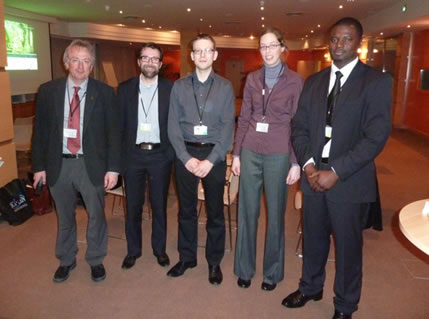
From left to right: Eric van Walle (BNS chairman), Hans Naômé (BNS-YG chairman), Philippe Dejardin (BNEN), An Mariën (BNEN) and John Mitchel Onana Obama (ULB).
An: "As a component of the BNEN Master of Science in Nuclear Engineering curriculum, I wrote a thesis about electrochemical oxygen sensors to measure the oxygen concentration in lead-bismuth eutectic (LBE) at temperatures below 400 °C. The development of these sensors is important for the chemical conditioning of the LBE cooling agent in MYRRHA.
Most oxygen sensors that are currently used provide an unreliable result at very low temperatures. The low conductivity of the materials in the sensor could be a possible explanation for this unreliability. This is why I examined sensors that are made of materials with a better conductivity.
I carried out various characterisation studies (with X-ray diffraction, optical and scanning electron microscopy, 4-point conductivity measurements and bending tests) in order to check whether the studied materials complied with the requirements. The sensors were then tested in liquid metals at low temperatures (from -280 to -400 °C).
The results show that the use of more conductive materials does not result in a lower operating temperature of the sensors. This may indicate that the transfer of oxygen between the liquid metal and the sensor is not fast enough to obtain a reliable reading at low temperatures. Further research is therefore required in order to develop adequate oxygen sensors for the MYRRHA cooling agent.
I carried out my thesis with the help of Jun Lim and Kris Rosseel as mentors, and Peter Baeten as promoter. They provided me with excellent support during my research. I could also count on the technical support of many colleagues within the Onderzoek Nucleaire Systemen (ANS – Nuclear Systems Research) and Microstructurele en Niet-destructieve Analyse (NMS – Microstructural and Non-destructive Analysis) units. I would like to thank everybody for their contributions."
An Mariën: Development and calibration of electrochemical oxygen sensors for application in low temperature regions in liquid lead alloys cooled reactors.
Philippe Dejardin: Current knowledge of the Molten Corium Concrete Interactions (MCCI) and parameters of importance for representative reactor cases under dry conditions using the MEDICIS code.
John Mitchel Onana Obama: Contribution to a risk-informed assessment of the technical specifications of a nuclear power plant.
http://www.euronuclear.org/e-news/e-news-36/bns-2.htm

"The Belgian Nuclear Society (BNS) has a successful history of organising multiple events that give an overview of the current status of a great variety of subjects related to nuclear applications. Our former Chairman, Didier Haas, has to a large extent promoted these activities. Thank you Didier!
Nuclear energy is one of these nuclear applications. When the Fukushima nuclear accident occurred on 11 March 2011, nuclear electricity generation suffered a serious setback and it is more than ever up to the nuclear community to demonstrate the safety of its installations. The stress tests that were imposed by the Belgian and European Authorities after the accident should, therefore, be looked upon as an opportunity to demonstrate the safety aspects of our nuclear infrastructure; a demonstration that should help promote greater confidence in nuclear technology and its derivatives.
We should not forget that Europe is the world leader in nuclear technology and that Belgium has contributed a lot to it earning this status. Many studies have demonstrated that an electricity mix with maximised renewable sources still needs nuclear generated electricity to satisfy society’s present and future energy needs, while at the same time taking into account the need to mitigate the effects of climate change. Nuclear energy technology should be considered as a trump card for Europe, not a joker where risks are taken that could lead to the loss of accumulated knowledge and experience, which are still vital in the short term. Renewable energy sources should be developed as much as possible, but not independently at the expense of securing the future of nuclear technology. Moreover, the development of nuclear applications has always been a driving force behind nuclear science and R&D. Clearly, nuclear energy has created a legacy with regards to high level nuclear waste and related issues. Surely, it is up to the nuclear research community to solve this problem, but this can only be done if we can guarantee the necessary level of education and training of experts that is required to encourage an understanding of the fundamentals of nuclear physics. We do not only need engineers, physicists and expertise in various other disciplines to tackle these problems, we also need them to operate the broad range of different nuclear installations that the sector has. A major issue here is the need to have experts to regulate and evaluate these nuclear installations: they also need on-the-job training in order to gain the necessary experience to make the right decisions and to underpin their theoretical knowledge. We need innovation in order to attract and keep these people in the nuclear sector.
Nuclear applications save lives. Today, the medical world would stand still if nuclear techniques were no longer available. Do we want this situation to stagnate just as we are on the verge of making many breakthroughs that would allow major progress to be achieved in the diagnosis, cure and treatment of patients suffering from painful diseases?
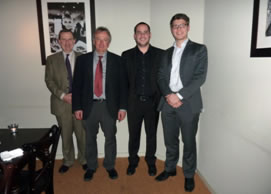
Didier Haas (past Chairman), Eric van Walle (Chairman), Grégory Délécaut (past Secretary), Thomas Berkvens (Secretary)
The Belgian Nuclear Society has an important role to play today: from expressing its views to writing papers, as well as by organising lectures and conferences. The dynamism of the BNS-YG, avid contributors to the Society, is one of main drivers for action, so why not join it and make a contribution. BNS brings together experienced professionals in Belgium with a range of expertise in nuclear disciplines to listen and to discuss the main issues of the day: these professionals want to contribute to a multi-disciplinary field with critical, self-analytical and constructive views and contribute to a Society that looks at its long term future in an open and clear way. Join us and be part of our Society’s future!"
Eric van Walle, Chairman of BNS
http://www.euronuclear.org/e-news/e-news-36/FJOH.htm


This eighteenth session of the Frédéric Joliot/Otto Hahn (FJOH) Summer School on Nuclear Reactors Physics, Fuels, and Systems will take place in Aix-en-Provence, France, from 22 -31 August, 2012. The Karlsruhe Institute of Technology (KIT) and the Nuclear Energy Division of the CEA (France’s “Commission for Atomic Energy and Alternative Energies”) jointly organise each FJOH Summer School and the venue alternates between Karlsruhe and Aix-en-Provence.
This year’s session is dedicated to innovative modular nuclear reactors. The programme addresses reactor concepts, the motivation behind the concepts and their perceived advantages and limitations. Various lecturers from internationally renowned universities and R&D laboratories will introduce the specific features of these reactors, the main underlying physical phenomena, the latest state-of-the-art core and fuel modelling and relevant analytical methods. The lectures are of a post-doctoral level and are intended for junior as well as experienced nuclear scientists and engineers working on a broad range of scientific fields and technological and engineering applications.
FJOH-2012 participants will learn about the relative merits of innovative modular reactors based on different coolant technologies, not only for electricity generation, but also for sea-water desalination, marine propulsion, district heating, high-temperature and other applications. Different lecturers discussing the same topic are expected to provide complementary perspectives.
When it began in 2004, the scope of the School was extended to include scientific issues related to nuclear fuels. The School’s aim is to address the challenges of reactor design and optimal fuel cycles, and to broaden the understanding of theory and practical experiments. This year’s course (FJOH-2012) is a continuation of the Frédéric Joliot Summer Schools on Modern Reactor Physics and the Modelling of Complex Systems that were created by CEA in 1995 to promote knowledge in the field of reactor physics, in a broader sense, and to encourage the international exchange of teachers, scientists, engineers and researchers.
The Summer School is sponsored by KIT, the CEA Nuclear Energy Division (DEN) and the French Institute for Education and Training in Nuclear Science and Technology (INSTN).
To learn more about the course and its programme please click on the following links:
http://www.euronuclear.org/e-news/e-news-36/hungary.htm

On 8 March, the European Domestic Agency of the ITER project, the European Joint Undertaking for ITER and the Development of Fusion Energy (F4E for short) signed its very first Framework Partnership Agreement (FPA) with a consortium of three institutions belonging to the Hungarian Fusion Association. The Wigner Research Centre for Physics as project coordinator, the MTA Energy Research Centre and Budapest University of Technology and Economics are the consortium partners that will deliver all the necessary R&D, engineering, quality control, supervision and managerial activities related to the electrical infrastructure needed to service all in-vessel, in-cryostat and in-divertor diagnostic sensors of the ITER Tokamak. The objective of the FPA is to deliver the technical specifications of the items-to-be-delivered, which include connectors, cables, cable tails & looms, conduits for looms and sensor tails, and feed-throughs. The technical specifications will be developed up to the level required for the production of Build-To-Print (BTP) drawings and manufacturing specifications.
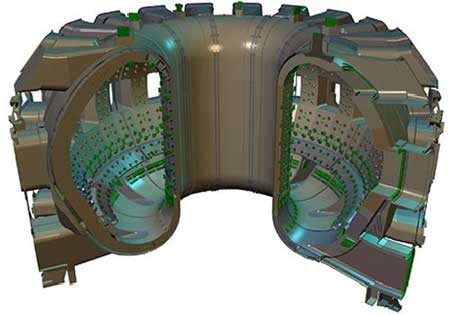
The stainless steel vacuum vessel of the ITER Tokamak, with an enormous volume of 840 m3
(Source: www.fusionforenergy.europa.eu )
On the one hand, the FPA provides the long-term stability and financial backing needed by beneficiaries (single and consortia) to carry out R&D work for Fusion for Energy (F4E). O n the other hand, it gives better project management control for F4E throughout every stage of the partnership process with the beneficiaries. The FPA also has a decisive influence on the deliverables. During its 4 years of existence - a period that can be extended for another 4 years - the FPA will be implemented thanks to Specific Grant Agreements (SGAs) that will provide a total financial contribution of up to 3.7 M€, i.e. about 50% of the total costs.
The major challenge of this specific FPA for Tokamak Services lies in its complexity (all seven ITER partners have diagnostic sensors located across the machine’s whole surface) and very tight technical requisites (some parts need to be designed to withstand extreme gamma and neutron fluxes for a minimum of 20 years).
http://www.euronuclear.org/e-news/e-news-36/SNUS.htm

The Slovak Nuclear Society (SNUS) recently organised a scientific expedition to the Chernobyl Nuclear Power Plant and its surroundings. The expedition took place from 11 – 16 September. The participants included SNUS members from universities and representatives from the utilities Slovenské Elektrárne Inc. (the national NPP operator in Slovakia) and JAVYS Inc. (a company specialising in NPP decommissioning). The main goal of the expedition was to monitor conditions at the NPP and in its surrounding area 25 years after the accident that took place at the plant’s Unit 4.
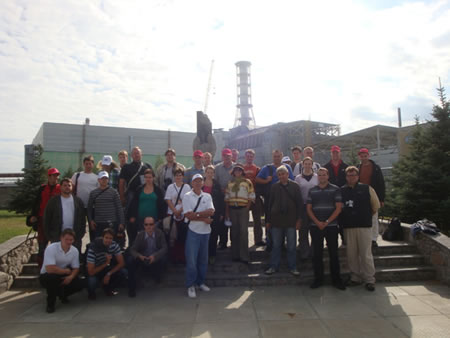
The programme of the expedition focused on collecting information related to the preparation of step-by-step decommissioning and cleaning, the visit of the information centre and the sarcophagus that covers the damaged unit, the visit of the control room of the shut-down Unit 1, the measurement of radiation dosage levels at the plant and in its vicinity and the collecting of samples from the local environment for subsequent analysis and measurement in the plant’s radiochemical laboratories. Of course, a visit of the ghost city Pripyat was also a must. Once, Pripyat used to be home to the plant’s workers and their families.
Participants travelled by bus to Slavutich, where the plant employees (about 3,000 people) live at present. Slavutich, with a population of 25,000 was built in in a record-breaking period of 18 months (construction began in January 1987) and 8 republics of the former Soviet Union participated in its construction. Today, employees are transported from Slavutich to the plant by train, which commutes four times a day (about half of the railway line cuts through Belarus).
On the first day of the expedition we had a look at newly-built equipment used for processing solid and liquid radioactive waste that were manufactured thanks to a substantial contribution from the company NUCEM. The equipment is being used for training personnel in the starting-up of testing, and standard operation.
In the afternoon we moved to the “Red Forest” where measurements were carried out and samples were collected for radiochemical analysis. The Red Forest is the area that was most affected by the accident, which is clearly evident even today. Works associated with the decontamination of the area are still going on. Nonetheless, flora and fauna does not show any significant anomalies. Of course, this area is uninhabited.
The next day, we visited the Information Centre located close to the Unit 4 sarcophagus and familiarised ourselves with the current status of the sarcophagus, which was erected within 206 days. During its construction, more than 90 thousand people worked relentlessly day and night. The technology used during its construction is located in a vast area that remains inaccessible. Due to the worsening state of the sarcophagus (mainly due to the weather conditions) it was decided to build a new shelter over the existing structure. The contract for the work was won by the consortium NOVARKA, led by two French companies. Financing of the project was supported by 2 million€, from Slovakia. Altogether, 800 million€ were collected from 28 countries around the world and from the European Union.
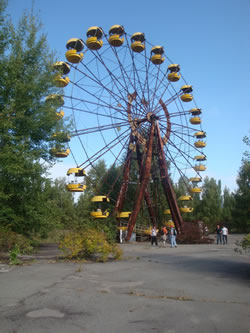
We also had an opportunity to visit Pripyat (about 4 km from the damaged Unit 4), where about 49,500 people lived at the time of the accident. The city was evacuated in the afternoon of April 27, 1986 using about 1200 buses with the promise that people would return within three days, which, of course, never happened. The city has now been abandoned to nature and you can see the ravages of nature after 25 years. Members of the expedition took a lot of photographs and videos. By the way, funds set aside to support “nuclear tourism” simple disappeared into thin air – nobody knows where.
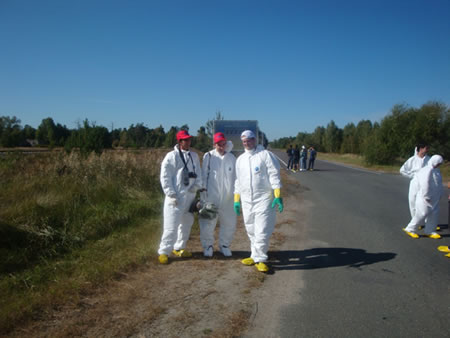
In the afternoon, we were able to visit see the control room of Unit 1 and received information about the specifications of this type of nuclear power technology and about the operation of the intact units, which continued up to 99 and 2000 respectively. After that date all units of the plant were shut-down for good. Today, personnel organised in shifts work there - 20 employees per shift.
On the last day, we had a look at the Chernobyl museum, in Slavutich, and visited a radiochemical laboratory located there. Some participants analysed the samples collected in the Red Forest.
Two weeks after the expedition the government of Ukraine cancelled all further trips to Chernobyl until further notice. A correct decision…
Experiences gained from this expedition and a summary were published in the 2/2012 issue of SNUS Bulletin.
Jozef Markuš
Vice Chairman of SNUS and a participant in the expedition.
http://www.euronuclear.org/e-news/e-news-36/sne-news.htm

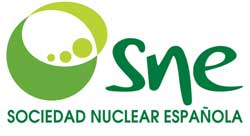
This year the Spanish Nuclear Society, SNE, once again organised its winter seminar. It was entitled Nuclear Power Plants in 2011: Experiences and Perspectives. Spanish nuclear industry representatives discussed issues relevant to nuclear power plant operation in 2011 and focused on the future of the nuclear industry. University representatives, including both teachers and students, also participated in the seminar.
This year, the Special Session was devoted to the subject Energy crossroads in Europe and was moderated by Lola Morales, President of the Spanish Nuclear Society. The guest speakers were Alejo Vidal-Quadras, Vice President of the European Parliament (EP) and Eduardo Montes, President of UNESA. The basic message that they gave to attendees was that due to Europe’s high dependence on energy the decision of some countries to abandon their nuclear programme is likely to lead to an increase of CO2 emissions and electricity prices. Meanwhile in Spain, where the situation is difficult due to a fall in demand in 2011 of 1.9 % on account of the economic situation, an upward trend in the cost of electricity, an accumulated deficit rate due to regulated activities and an increase in CO2 emissions by 32% caused by increased coal generation has meant that the decision to maintain the current nuclear programme has been shown to be a more than adequate response.

The SNE’s General Assembly was held at the end of the seminar.
The 38th Annual Meeting of SNE will be held from 17- 19 October of 2012, in Cáceres, hosted by IBERDROLA. All relevant information about the meeting can be found at: www.reunionanualsne.es.
The Nuclear España Best Article Prize was awarded this year to a paper entitled: The added value of replica simulators in the operation of nuclear power plants, which was written by Pedro Díaz, Norberto Rivero and Fernando Ortega, from TECNATOM. The Award Committee also gave an Honorific Mention to the issues of the magazine 40th Anniversary of the Santa Maria de Garoña Nuclear Power Plant and Almaraz Nuclear Power Plant.

SNE recently organised a cycle of three conferences on The Accident at the Fukushima Plant. The initiative met with great success, as witnessed by the attendance. The conferences were entitled “The development of accidents: lights, shadows and opportunities”, “The plan of stabilisation and the control of the plant and the consequences of the accident from the point of view of environmental contamination” and “Actions after the accident: Radiological impact and measures to protect the population. IAEA missions”
The SNE also recently signed a collaboration agreement with the Mexican Nuclear Society.
The Spanish Nuclear Young Generation has scheduled a cycle of 6 conferences on the theme of Experiences gained with the Construction of Spanish Nuclear Power Plants.
The contribution of the Spanish nuclear power plants in 2011 to the country’s total electricity production was 19.6%.
The government has granted the operating license for 10 more years to the Ascó and Cofrentes NPPs.
Finally, Almaraz NPP’s Unit II has increased its electric power by 65 MW.
http://www.euronuclear.org/e-news/e-news-36/nss.htm

The Nuclear Society of Slovenia (NSS) cordially invites you to take part in the traditional annual international conference entitled: Nuclear Energy for New Europe, which will be held in Ljubljana, the capital of Slovenia, from 5-7 September, 2012.
The focus for this year’s conference will be sustainable nuclear energy use. The conference will feature prominent guest speakers from ENSREG (European Nuclear Safety Regulators’ Group), the OECD/NEA (Nuclear Energy Agency) and WANO (World Association of Nuclear Operators), who will highlight the importance of nuclear power as a sustainable energy source.
The presentations will be followed by scientific and technical oral and poster sessions, which will cover a wide variety of aspects connected to the peaceful utilisation of nuclear energy: from the technical aspects of operating an NPP, to a broad range of different scientific topics related to nuclear fission and nuclear fusion.
The conference is traditionally a focal point for decision-makers, opinion-leaders from the nuclear sector, potential investors, regulatory bodies, nuclear research and educational institutions from Europe and around the world to discuss the main issue of the day.
Last year’s conference, the twentieth in a row, was held in Bovec and attracted over 180 participants from all over Europe, Asia and America.
We are very pleased to invite you to submit your abstracts, which can be on a variety of topics, for the upcoming conference . The deadline for abstracts submission is 15 May 15, 2012 (www.nss.si/ljubljana2012/images/downloads/call_for_papers.pdf).
For more information about the conference programme, venue and hotel accommodation, please visit: www.nss.si/ljubljana2012/
http://www.euronuclear.org/e-news/e-news-36/november-nuclear.htm

Last November, as part of the activities of the Nuclear JJNN November, a Basic Course on Nuclear Science and Technology and a Nuclear Fusion Seminar took place in the School of Industrial Engineers of the Polytechnic University of Madrid (UPM).
Attendance at the course and seminar was impressive - about 200 students listened attentively and with interest to the speakers that delivered the Basic Course. More than 70 people took part in the Fusion Seminar.
The Basic Course took place on November 25. It began at 15:30 and attendees had the honor of listening to an opening address from Eduardo Gallego, Director of the Department of Nuclear Engineering, who shared the microphone with the two course co-ordinators, Raquel Ochoa (JJNN Vice Chairman) and Gonzalo Jimenez (a member of the JJNN Board). The speakers gave brief presentations of between 10 and 20 minutes, during which time they highlighted each component of the basic principles of nuclear technology.
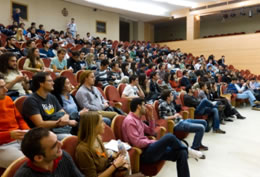
Fig. 1 Participants in the Basic Course
The course began with a presentation by Manuel Fernandez-Ordonez outlining the basics of nuclear physics. Luis Yagüe (JJNN’s Chairman) then summarised the various components that make up a light water reactor in a nuclear power plant. Patricia Rubio presented the complete fuel cycle from uranium mining to the production of fission energy, providing further information and giving special emphasis to one of the most important of all the components, the nuclear fuel.
Miguel Sanchez addressed one of the most topical subjects today, nuclear safety. In particular, he listed the main concepts of nuclear safety. In the final presentation before the break, Alfonso Barbas addressed issues related to radiation protection. Then the session concluded with questions and answers.

Fig. 2 Rear view of the auditorium for the Basic Course
After the break, Gonzalo Jimenez addressed another key topic - to quote his own words, "another great workhorse of the nuclear energy debate" - nuclear waste. An exhibition during the course was accompanied by two separate video demonstrations, all of which stimulated and encouraged the attendees to take part. Then Raquel Ochoa described the characteristics of the next generation of reactors.
Leaving aside what up until now had been the sole focus, namely nuclear energy as a source of generating electricity, Alfonso Vinuesa cited some of the other important applications of nuclear technology. Almudena Diaz then concluded by talking about climate change and sustainable development.
Before the course was finished there was another interesting round of questions. Finally, the presentation of diplomas took place and the event officially concluded.
The highlight of the course, besides the great reaction it received from attendees, was the active participation of all those present in the two rounds of questions and answers that followed the presentations.
The other major activity that took place at the November Nuclear, the Nuclear Fusion Seminar, took place on 21, 23, 28 and 30 November. Dr. Manuel Perlado, Director of the Institute of Nuclear Fusion and Professor at the Department of Nuclear Engineering of the UPM, opened the seminar with a presentation on current research in nuclear fusion in Spain. He was accompanied by the coordinators of the seminar and members of the Board of Young Nuclear Generation, Gonzalo Jimenez and Rachel Ochoa.
The seminar was organised over a period of four days: the first day provided an historical introduction to the subject, the two following sessions focused on the two main technologies on the debating agenda, namely inertial confinement fusion and magnetic confinement fusion.
The final session concluded with an overview of ongoing major international projects, with special reference given to the challenges and difficulties of each technology.
The first speaker, Alberto Fraile, explained the beginning of fusion research and basic principles of fusion technology, including references to its non-civilian usages. The presentation was lively, with many videos and anecdotes and a high level of public participation.
The next presentation was given by Manuel Cotelo, who stated with clarity the theoretical principles of inertial confinement fusion technology and outlined the ongoing projects and future prospects of this technology.
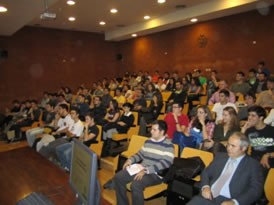
Fig. 3 Attendees at the Nuclear Fusion Seminar
Antonio Rivera introduced to participants the complex technology of magnetic confinement fusion. He spoke about its strengths and challenges and presented in depth the theoretical concepts that underpin it.
Finally, in the last session, Jesus Alvarez gave a broad overview of past projects, present initiatives and future prospects for both technologies, highlighting the projects and courses in which there is Spanish participation.
The closing session of the seminar was chaired by Dr. Emilio Mínguez, UPM Vice-Rector and member of the Board of the Spanish Nuclear Society (SNE) and Luis Yague, President of the Spanish Young Nuclear.
This inaugural Nuclear Fusion Seminar at the Institute for Fusion Research of UPM (ETSIIIM) was well received and aroused considerable interest. This was important as it was necessary to ensure that all those who had enrolled had access to the seminar – and the auditorium was virtually full capacity for each session!
By Gonzalo Jiménez and Raquel Ochoa
Universidad Politécnica de Madrid (UPM)
http://www.euronuclear.org/e-news/e-news-36/yg-pime.htm


PIME (Public Information Materials Exchange) is an annual conference aimed at improving communications in the nuclear sector. The main aim of the conference is to share knowledge on communications tools and strategies and to exchange ideas and network with colleagues from the nuclear field in order to increase public acceptance of the nuclear industry worldwide. PIME 2012 took place in Warsaw from 12-15 February. 170 nuclear communicators and young professionals from all over the world took part.
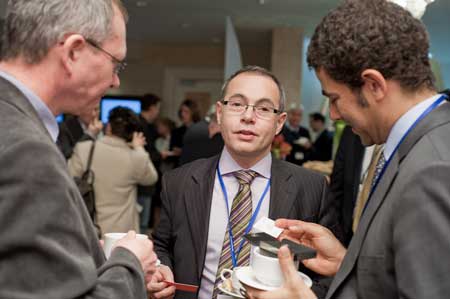
The focus of this year´s PIME-conference was the accident at Fukushima and its consequences for Europe and the whole world, especially regarding nuclear new build projects.
The event started on 12 February, with a short press conference and a Welcome Drink.
On 13 February, after the Opening Address and a presentation from the host country, the first Plenary Sessions got under way. It was dedicated to an analysis of how communicators met the challenge of Fukushima. The President of the Japan Atomic Industrial Forum (JAIF), Takuya Hattori outlined what exactly happened at the plant, what was communicated and how. Mr. Hattori explained that the biggest problem that communicators faced following Fukushima was that the information released was communicated too late and, initially, was too difficult to understand. In short, the information released from Japan was too late, inconsistent, unclear, too technical and fragmentary. This information policy also prompted reactions from overseas including, for example, the cancellation of events and the evacuation of people and embassies in response to the accident.
The challenge for communicators, especially in the nuclear field, is to provide rapid credible, accurate and easy-to-understand information. To achieve this goal it is necessary to use all the methods and tools of communication, especially new social media, like internet-blogs.
The next speaker was Professor Tim van der Hagen from Delft University of Technology, in the Netherlands. He explained the role that scientific stakeholders played in the first days after the accident. The big problem they faced was that the media wanted to write about worst case scenarios, but serious scientists have to stick to the facts. So scientists have been replaced in the media by pseudo-experts. These people are taken as seriously as scientists, especially because the public suspects that there are links between industry and scientists, so trust in scientists is not always a given. Professor van der Hagen’s presentation ended with a focus on the interesting question of whether scientists should stick to the facts and risk not being believed, or speculate on the worst case scenarios and be taken seriously by the public and the media. The answer from the audience was that it is necessary to do both. Although it is not serious from an academic point of view to comment on or draw worst case scenarios, it’s a necessary process. If scientists and experts don’t comment on the worst case scenarios presented in the media, some pseudo-experts will fill the resultant void and be taken seriously by the public and the media.
Gill Tudor, Spokesperson and Head of Media Outreach at the IAEA, then explained the communications role that the IAEA fulfilled during and after the accident. It was remarkable because it was the first time that new media like Facebook, Twitter, Youtube or Flickr were used to inform people. The problem of using these new media is that factually verified information cannot be delivered as quickly as video clips. For example, consider the hydrogen explosions that occurred in Fukushima: minutes after they occurred, every TV station in the world was showing videos of the explosions. Everyone wanted to know what had happened, but nobody could provide verified information as quickly as the media and the public demanded. Once again, pseudo-experts speculated about nuclear explosions having occurred that were similar to those at Chernobyl.
Walter Hill, Senior Director of External Communications at the Nuclear Energy Institute (NEI), USA, also highlighted the importance today of exploiting social media and new media outlets. On the first day after the accident a special webpage was created and telephone and fax hotlines were installed. On that first day zero calls and faxes were received. But during the first month after the accident 45.000.000 clicks on the newly created webpage were registered. This is further evidence of how important it is to work with new media.
The second Plenary Session focused on the question of how events in Japan affected public acceptance of nuclear. The speakers where Joseph Milton from the Science Media Centre, UK; Christian Legrain, Secretary General of SCK-CEN, Belgium and Dr. Ephraim Gräff, from the Germany utility E.ON. It was very interesting to discover that in December 2011, in most countries, the level of public opinion in favour of nuclear was about the same as it was before Fukushima. One reason for this is that the worst case scenarios envisaged by the “gutter press”, like the evacuation of the whole of the northern part of Japan, had not materialised. Once again, this stressed how important it is to communicate: the general advice given was “Be ready to speak to the media because otherwise someone else will do it.”
After lunch three parallel workshops took place. They were entitled:
- YGN: Preparing for nuclear new build: get on the bus!
- Do you want to know more about electricity production and energy?
- Internal communications at a time of crisis
The workshops where followed by presentations by the 5 short-listed candidates for the 2012 PIME Award for Communications Excellence. The five short-listed campaigns “sold” to Pimers were as follows: The first one was a Russian project called the Train of Innovation, which centred on a train that travelled throughout Russia informing people along the way about nuclear energy, like a mobile nuclear information centre.
The second campaign, which was organised by the French branch of WiN (Woman in Nuclear), promoted special educational tools aimed at helping children to learn more about nuclear and providing teachers with didactic support. The Q&As that featured in the campaign used the language of teenagers, which increased young people’s access to and interest in basic information about nuclear.
The third shortlisted campaign was from the Netherlands. A team from the NRG (the Dutch national nuclear research consultancy), which is responsible for running the research reactor at Petten, in the Netherlands, presented their campaign, entitled Forward thinking, giving nuclear a human face. It communicated what the nuclear future could look like in 50 years’ time. Another important component of the campaign was the information that was communicated to the public about the vital role that nuclear energy plays in providing life-saving health care provision.
The fourth campaign presented was from Austria. A team from the Austrian Young Generation section of the Austrian Nuclear Society described the campaign behind the book they had written about the core question with regards to nuclear power, entitled: What happens when something happens? The book was written after the Fukushima accident in order to inform the public, in a serious way, about nuclear energy. One issue highlighted was how the public, especially in German-speaking countries, is misinformed about nuclear energy production and how the information is mostly given to the public by the gutter press and nuclear opponents.
The final short-listed campaign presented came from the Emirates Nuclear Energy Corporation (ENEC), from the United Arab Emirates. It involved a public information project that ENEC had launched aimed at people living in the UAE, which was necessary because nuclear was something completely new to them. This information campaign was especially important after the accident in Fukushima, because people had legitimate questions that ENEC needed to answer. The project increased the credibility of the industry with the public. So the UAE started where other countries have stopped.
That evening a Gala Dinner took place at the Palace of Culture and Science in Warsaw. The choreography from the waiters who served the delicious food really excited the participants. The evening concluded with dancing and drinks in a bar.
On the second day, the results of the previous day’s workshops were presented. This was followed by the third Plenary Session, which was entitled: Nuclear has a future – new build still on track in Europe. Jean-Pol Poncelet, Secretary General of ENS and Director General of FORATOM, gave an overview of the new build projects in the world. 64 reactors are currently under construction, 16 of them in Europe. John McNamara, from NuGen, UK, then presented the communications strategy behind the British new build project. In the UK 8 approved sites have been approved where approximately 13.000 MW will be generated by 2025. Four of the units will be EPR’s.
Dorota Chandavoine, from the Polish utility PGE, presented the communications strategy of Poland’s new build project. The aim of the strategy is improve the knowledge of the public, because knowledge leads to understanding and understanding leads to acceptance and support.
After the third plenary session a further 3 parallel workshops took place, developing the following themes:
- Media training
- WiN: Learning more about nuclear safety and legal issues after Fukushima
- Other industries
After lunch the fourth Plenary Session took place, focusing on the topic Learning the lessons of Fukushima: cliché or reality? Gaston Meskens, Researcher from the Centre for Ethics and Value Inquiry (CEVI) from the University of Gent, explained how to improve the learning process. After that, Peter Tuominen, Manager of Development and Communications at FORTUM, Finland, talked about delivering the right messages to an interested public.
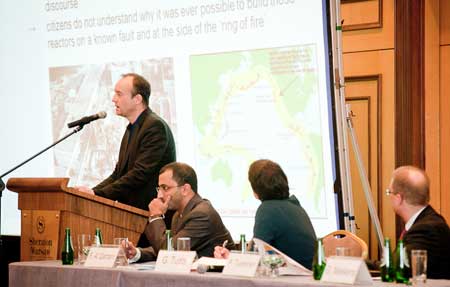
The last presentation was given by Fahad Al Qahtani, Director of External Affairs and Communications at ENEC, who explained how Fukushima had changed their communications focus. They found themselves in the unique situation where Fukushima happened exactly at a time when high-ranking politicians and businessmen were visiting the construction site and a big party had been planned. After, or rather during the Fukushima accident, they had to change their information policy. Information about Fukushima was more important at that time than information about the new build project. It was also important to tell the public about the differences between the situation in Japan and the likelihood of a similar scenario happening in the United Arab Emirates, especially with regards to earthquakes and tsunamis.
After the fourth and final plenary session, the results of the workshops from the second day were presented. This was followed by the Closing Session, where Jean-Pol Poncelet reflected upon how nuclear communicators can get the right messages across bearing in mind what happened in Japan. Mr. Poncelet then announced the winner of the 2012 PIME Award for Communications Excellence. It was NRG from the research reactor in Petten, the Nederlands, for its Forward thinking, giving nuclear a human face campaign. As a farewell glass of champagne was being served, the location for PIME 2013 was announced. Next year PIME will take place in Switzerland.
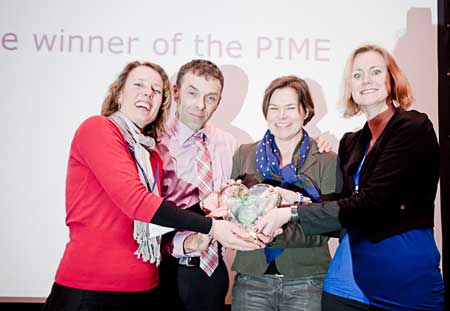
"NRG wins the 2012 PIME Award"
The next day the Austrian Nuclear Society delegation joined other participants in a tour of the Polish research reactor, MARIA, near Warsaw. We had the opportunity to visit the reactor while it was working at 90% of its nominal power and see all the facilities at the research centre, including the manufacturing of medical equipment, the decommission of the old research reactor, the storage of the spent fuel and the well-equipped information centre. In the afternoon, we went back to the hotel.
For three days PIME brought together many important communicators in the nuclear sector. The conference showed how important it is to communicate with the public, especially since the Fukushima-accident. Nearly everyone has an opinion on nuclear issues, but only few people are well-informed about the facts. The better the public is informed, the more they will support or at least accept nuclear projects.
PIME 2012 showed me, as an engineer, how important it is to communicate with the public, especially on complex technologies, like nuclear technology. Misinformed people are afraid of nuclear, and people who are afraid are usually against it.
Oliver Siegl
ÖKTG – Austrian Nuclear Society
Austria
http://www.euronuclear.org/e-news/e-news-36/yg-rrfm.htm


The annual RRFM (Research Reactor Fuel Management) conference took place this year in Prague, the Czech Republic, from 18 to 22 March. It was organised in conjunction with IGORR (International Group on Research Reactors) in order to create a kind of “European Research Reactor Conference” focused not only on research reactor fuel management issues, but also on all aspects of research reactor operation. The conference was opened by Jean-Pol Poncelet, ENS Secretary General; Dr. Martin Ruscak, Director of Rez Research Centre Ltd., in Prague, and Dr. Jan Kysela, Scientific Director at Rez Research Centre Ltd.
The conference programme was organised around 8 sessions – International Programmes; Fuel; Operation, Maintenance & Safety Reassessment; Utilisation of Research Reactors; New Research Projects; Innovative Methods in Research Reactor Analysis and Design; The worldwide impact of the Fukushima-Daiichi Accident on Research Reactor Stakeholders and Medical Applications. Given the number of participants, it was necessary to organise each session in parallel, except for the one dedicated to International Programmes. With so many interesting topics on offer, it was difficult for delegates to choose the session most relevant to them. Many of the topics covered during the sessions were further discussed during the coffee breaks. The tight schedule and the carefully planned programme made it necessary to limit several debates to the auditorium and there wasn’t always enough time to answer all questions asked. Luckily, extra room was provided to encourage further individual break-out sessions.
From my point of view, the most important session was the one on Innovative Methods in Research Reactor Analysis and Design. The presentations during this session were focussed more on the numerical solutions used in nuclear reactor analysis.
Beside the oral presentations, there was also a poster session, with 42 posters on display during the designated sessions.
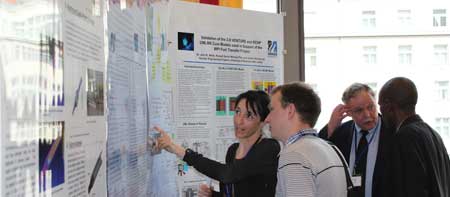
Another important contribution to the conference was the technical tours. There were two options on offer: firstly, there was a visit to Rez Research Centre Ltd. The second one involved a visit to the VR-1 training reactor at the Czech Technical University, in Prague.
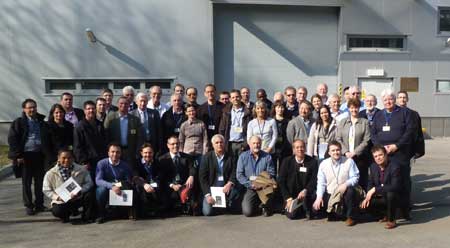
An essential part of any conference is the social programme, which allows participants to make knew contacts and to finish discussions that couldn’t be completed either during the question and answer sessions or the coffee breaks. And the RRFM social programme didn’t disappoint. Unfortunately, I did not take part in the conference dinner, but based on the pictures posted later in the photo gallery it was a very enjoyable evening.
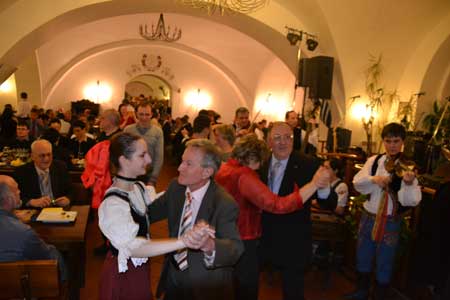
RRFM 2012 brought together a broad range of professionals, including those who work with a variety of research reactors, researchers at specialised institutes and representatives of supervisory bodies. The goal of the event was to exchange knowledge and techniques, to share experiences and expertise and to network among fellow nuclear professionals. Additional meetings organised enabled people to work together to find collective solutions to common operational problems, to help to improve education and training programmes and to foster the forming of coalitions.
I really enjoyed the time I spent at RRFM 2012 and I am looking forward to the next ENS conference.
Lenka Heraltova, Czech Technical University, Prague, Czech YGN
http://www.euronuclear.org/e-news/e-news-36/ansaldo.htm

Three major industrial companies in the nuclear sector, Ansaldo Nucleare, Nuvia and Cammell Laird, signed in the last quarter of 2011 a partnership agreement for the design and construction of heavy modules and components for the UK’s civil nuclear programme.
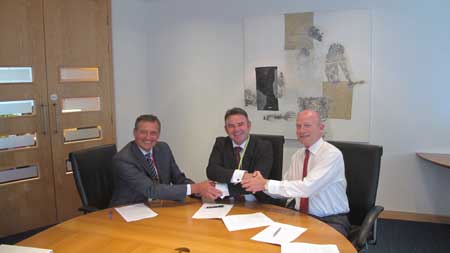
Under proposals announced by the UK Government in November 2009, 10 potential sites have been identified for new nuclear power stations. If built, these will generate up to 25 per cent of the overall country’s electricity energy needs. The partnership was set up within the context of UK initiatives to create a reliable and competitive supply chain thanks to nuclear industry players that are capable of sharing the challenges offered by new build programmes. The blend of skills that each member of the partnership offers, together with their superb manufacturing facilities and excellent geographical location, will provide major advantages for the manufacturing of modules for the UK’s nuclear power plant construction programme.
In August 2010, Nuvia and Cammell Laird announced the setting up of an initial partnership whose mission was to break into the nuclear module market. With its addition to the partnership in 2011 Ansaldo Nucleare became the third essential component of this ‘best-in-class’ alliance.
Ansaldo brings 30 years’ experience in the nuclear power sector, and offers capabilities that include plant design, engineering, fabrication management, construction, commissioning, operational assistance, maintenance and decommissioning. Significantly, Ansaldo Nucleare is the designer of the major modules for the Westinghouse AP1000 plant at Sanmen nuclear power plant in China and is currently involved in the design and construction of its containment vessel. Ansaldo Nucleare is fully owned by Ansaldo Energia, a key power generation supplier in Europe.
NUVIA is the UK’s third largest independent supplier of nuclear technology, providing a range of services from front-end consultancy through to design for build and final decommissioning, for new and existing nuclear facilities in the UK and overseas. NUVIA has extensive technical knowledge and experience in the construction of EPR nuclear power plants through its parent company the Vinci Group, one of the largest construction companies in the world. In particular, it has specialist knowledge of and experience of working in accordance with British and international nuclear industry standards and regulations.
Cammell Laird is the largest and most successful ship building, repair and conversion company in the UK with new build and major engineering construction capability and an enviable reputation for first class workmanship and industry-leading safety standards. Cammell Laird's project management team has a proven track record in the execution of major ship repair and shipbuilding contracts and the manufacture of ultra large and complex engineering structures.
The partners propose to build super modules for AP1000 and EPR nuclear power plants, initially for the UK market, using an off-site ‘weather-protected’ construction hall and sea access loadout facilities at the Cammell Laird shipyard in Birkenhead. These facilities are capable of handling modules up to 5000 tonnes in weight.
The principle advantages of this innovative approach lie in the ability to design and build larger units than were previously possible in a weather-protected factory environment. This will ultimately reduce construction costs and improve quality, safety and delivery performance while at the same time considerably reducing onsite construction.
John Syvret, CEO of Cammell Laird said “Ansaldo Nucleare has added an important new dimension to the partnership Nuvia and Cammell Laird that was formed last year, as they have patented module designs together with operational capability and significant design capacity. Ansaldo is also currently involved in the construction and management of the latest AP1000 Nuclear Power Plant being built in China. These skills when added to the capabilities and infrastructure of Nuvia and Cammell Laird, create a unique formula for the design, offsite construction and installation support of ‘super modules’ for future nuclear power plants to be built in the UK and ultimately around the world.”
Keith Collett, CEO of Nuvia UK commented, “The addition of Ansaldo Nucleare to the already impressive partnership of Nuvia and Cammell Laird creates a significant proposition to the nuclear new build market, increasing the spectrum of capability, knowledge and experience from one collaborative source. This association provides a real opportunity for Nuvia, Ansaldo Nucleare and Cammell Laird to drive innovation and enhance the technical engineering skills offered to the UK and International market.”
Roberto Adinolfi, CEO of Ansaldo Nucleare, speaking about the challenges ahead said “Ansaldo Nucleare has been a European pioneer in the development of third generation advanced designs based on passive technology that prevent reactor cooling difficulties after a blackout, supporting Westinghouse from the embryonic stages of their design of AP1000 and co-operating with other vendors to manufacture and test innovative components. The agreement with Cammell Laird and Nuvia will inject Ansaldo's experience in support of the UK nuclear program in a very effective way, creating a win-win opportunity for the partners in playing a leading role in the European nuclear market”.
http://www.euronuclear.org/e-news/e-news-36/romania.htm

This spring Russia’s State Atomic Energy Corporation, ROSATOM, in cooperation with the TELESTO Production Company, released the world’s first ever movie shot with real actors in nuclear power plants (NPPs) – Atomic Ivan.
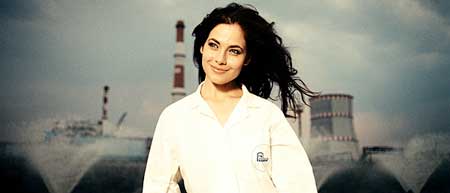
This film represented a double debut for Russian movie industry, both for the director Vasiliy Barkhatov, who is a famous theatre director, and for ROSATOM.
Funny, ironic and witty – this movie is surprisingly captivating and keeps the viewer's attention till the last frame. What is life like in a small town centred on the work of a nuclear power plant? What is work at the nuclear power plant like? Who are these people who work there?
«Nuclear plants are closed objects so we just wanted public to see how people work there. Film’s characters do not entirely resemble real nuclear experts but the actors tried and in many ways succeeded to show self-contained individuals with good obsession with their work» pointed out Sergey Novikov, Director of the Communications Department at ROSATOM.
«Atomic Ivan» tells the story of a young scientist, Ivan, and his girlfriend Tanya, who both work in an NPP station. Living unattached and working in an NPP mainly because of his girlfriend, Ivan is trying to forge himself a career and find love. Tanya, on the contrary, has absolutely devoted herself to her work and to science. These two completely opposite characters experience the typical problems that all the young people face – how to organize your life and what priorities to fix.

Filming in real NPPs (Kalinin and Leningradskiy) to provide an urban environment makes the film even more fascinating and helps not to divert attention away from the main theme of the film – experiencing a range of human emotions and discovering the energy of love.
The Russian premiere of the film took place at the Oktyabr cinema, in Moscow, on 29 March 2012.
http://www.euronuclear.org/e-news/e-news-36/sck-cen.htm

At the initiative of the Belgian Nuclear Research Centre, SCK•CEN, and the Fund for Scientific Research (Fonds National de la Recherche Scientifique, FNRS in French, and the Fonds Wetenschappelijk Onderzoek, FWO, in Dutch), the biennial SCK•CEN Professor Roger Van Geen Scientific Award is presented. This award, for which the winner receives 12,500€, recognises a research project that has provided an original contribution to or achieved important progress in an area of SCK•CEN expertise. The study must be at a post-doctoral level and should not have previously won an award. It is reserved for an individual project that has been submitted by researchers from a Belgian university, or from another research institution other than SCK•CEN.
The prize was presented at the Royal Flemish Academy of Belgium, on 19 March, by Melchior Wathelet, Secretary of State for Environment, Energy and Mobility, in the Belgian government.
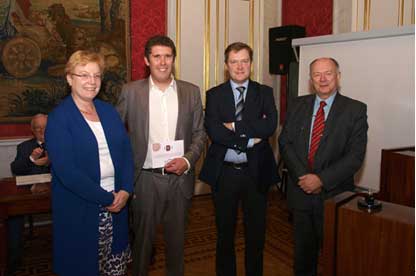
Elisabeth Monard, secretary-general of FWO, Dr. Sebastien Couet; Pierre Crevits, Principal Private Secretary of the Secretary of State for Environment, Energy and Mobility; Dr. Frank Deconinck, President of SCK•CEN’s Board of Directors.
Dr. Sebastien Couet won the award for his research project entitled: A Study of the magnetic and dynamic properties of nanoscale systems by nuclear resonant scattering.
Dr. Couet developed a "special" nuclear analysis technique, i.e., that of nuclear scattering. Many phenomena in solid state physics can be studied using this technique. In order to gain an insight into the behaviour and interaction of the individual components of electronic equipment, macroscopic measurement methods e.g. no longer suffice. The measurement must be carried out at a nanoscale level, because we are dealing with the measurement of objects no more than a few atoms in size. The experiment was carried out at the European Synchrotron Radiation Facility (ESRF) in Grenoble, France.
Nuclear technology, and in particular the method of nuclear resonant scattering, is a unique way of visualising this interaction in a non-destructive manner. This study may also lead to the development of superconductive materials.
Below is a CV of Professor van Geen, who gave his name to the prize.
Professor Roger Van Geen obtained a Masters in Physics and a Doctor of Sciences at the ULB (Université Libre de Bruxelles, or “Free University of Brussels”). He later became a full-time professor and Dean of the Faculty of Science and Applied Science at the VUB (the Dutch-speaking Vrije Universiteit Brussel, where he was appointed Rector in 1974.
The Academic Hospital of the VUB was inaugurated under his rectorship. He also decided to build an oncology centre and a children’s hospital. Professor Van Geen became a member of the board of SCK•CEN in 1975 and its Managing Director in 1989. From 1991 onwards, he was Chairman. He has left an indelible mark on the scientific achievements of SCK•CEN and made an important contribution to the development of a large network of international relationships. He also built bridges between the world of politics and the humanities.
http://www.euronuclear.org/e-news/e-news-36/IGD-TP.htm

The Implementing Geological Disposal of Radioactive Waste Technology Platform (IGD-TP) was launched on November 12, 2009 and at the same time its Vision Report was published.
The main objectives of the IGD-TP are to initiate and carry out collaborative actions in Europe to facilitate the stepwise implementation of safe, deep geological disposal of spent fuel, high-level waste, and other long-lived radioactive waste by solving the remaining scientific, technological and social challenges, and thereby to support waste management programmes in the Member States. The Platform aims to enhance confidence in solutions identified, to reduce overlapping, to make savings in the total costs of research and implementation and to make better use of existing competences and research infrastructures.
The IGD-TP’s work is driven by 12 waste management organisations1, which form the Executive Group that steers the IGD-TP. All 12 organisations share the common vision that “by 2025, the first geological disposal facilities for spent fuel, high-level waste, and other long-lived radioactive waste will be operating safely in Europe” (Vision 2025).
Currently, in April 2012, the IGD-TP has more than 85 participating organisations endorsing the vision and representing stakeholders from a wide range of backgrounds e.g. waste management organisations (WMOs), industry, research institutes and centres and the academic community. The activities of the IGD-TP can be followed on the dedicated public website: www.igdtp.eu.
The Strategic Research Agenda (SRA) provides the basis for the priorities of the RD&D activities that are needed in order to achieve the Vision 2025. Of particular interest are the areas for which enhanced cooperation within the IGD-TP is considered desirable and practically achievable - the so called “Key Topics”. The SRA communicates the remaining research needs, but will also be an instrument for creating synergies, co-operation and co-ordination both internally between the IGD-TP participants and also externally with activities taking place in other technology platforms and within other international fora. The final SRA document was published on the public website in July 2011.
The current objective for the IGD-TP is to publish its Deployment Plan (DP) on how it will work together. At present, the IGD-TP is also geared towards starting new joint activities in RD&D on the Key Topics identified in the SRA. Some EC projects are already ongoing: LUCOEX – Large Underground Concept Experiments, FIRST-NUCLIDES - Fast / Instant Release of Safety Relevant Radionuclides from Spent Nuclear Fuel, BELBaR - Bentonite Erosion: effects on the Long term performance of the engineered Barrier and Radionuclide Transport and REDUPP - Reducing Uncertainty in Performance Prediction. Another project DOPAS - Full Scale Demonstration of Plugs and Seals, was recently submitted to the EC for review.
A draft version of the DP was published in late December 2011 and is undergoing consultation during the first part of 2012. The final Deployment Plan should be published during summer 2012.
1 Andra (France), ARAO (Slovenia), BMWi (Germany),, COVRA (The Netherlands), ENRESA (Spain) , Nagra (Switzerland), NDA (United Kingdom), ONDRAF/NIRAS (Belgium), Posiva (Finland), PURAM (Hungary), RAWRA (Czech rep.) and SKB (Sweden).
http://www.euronuclear.org/e-news/e-news-36/nnl.htm

The National Nuclear Laboratory (NNL) was formally established by UK Government in 2008. It is a government-owned, commercially run organisation that provides the public sector and industrial customers, in the UK and abroad, with a range of specialised nuclear technology services and independent authoritative advice on nuclear issues. Unlike the traditional model of “national laboratories”, NNL receives no direct grant funding from national government. NNL also offers the nuclear scientists and engineers of today and tomorrow a state-of-the-art working environment in which to pursue a rewarding and stimulating career at the cutting edge of nuclear research and technology.
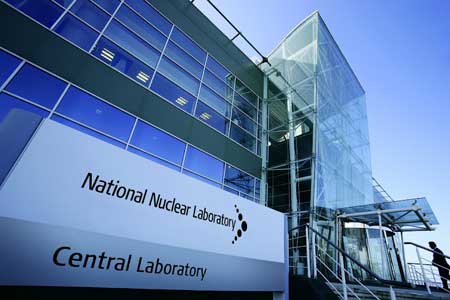
In addition to customer-funded work, NNL has a series of five signature research areas that form the main constituents of its self-funded “Innovation Programme.” These research areas are central to its mission and are of strategic importance to the UK and global nuclear industry. They are spent fuel and nuclear materials; waste immobilisation, storage and disposal; fuel and reactors; legacy waste and decommissioning and nuclear security, chemical, biological, radiological and nuclear (CBRN) threat.
NNL has a turnover of approximately £80 million and employs around 800 people (of whom over 450 are scientists) at six locations in the UK – Sellafield/Windscale, Workington, Preston, Risley, Stonehouse and Harwell. It is managed by a government-appointed consortium comprising three partners:
Battelle, an independent research and development organisation that specialises in identifying and applying new scientific discoveries
Serco, a company that provides expert counsel to national and local governments on how to improve the quality and efficiency of the public services that they offer, particularly in the areas of healthcare, education, transport, science and defence
The University of Manchester, a hub of academic excellence that specialises in research into nuclear materials.
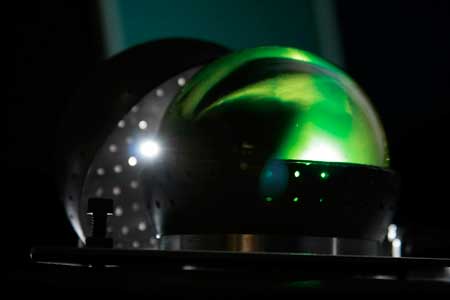
NNL generates additional income from the commercial deployment of NNL-developed technologies and intellectual property, generally through licensing agreements with commercial companies in the nuclear industry. Among its main customers are Sellafield Ltd.; EdF Energy, the UK Ministry of Defence, Babcock, Westinghouse, the Nuclear Decommissioning Authority (NDA), British government and international governments and the European Union.
For more information about NNL and its activities, click on www.nnl.co.uk
http://www.euronuclear.org/e-news/e-news-36/other-conferences.htm


22 -24 May 2012 in Warsaw, Poland
Warsaw University of Technology
more

24 - 25 May 2012 in Kaunas, Lithuania
Email: info@cyseni.com
more

3 - 6 June 2012 in Zadar, Croatia
email: zdenko.simic@fer.hr
more
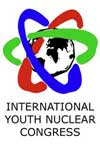
5 - 11 August 2012
Charlotte, USA
North American Young Generation
more
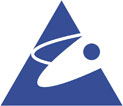
5 - 7 September 2012
Ljubljan, Slovenia
more

17 -21 September 2012
Como, Italy
more

24 -28 September 2012
Paris, France
more

10 - 13 October 2012
Hissar, Bulgaria
more

17 - 19 October 2012
Cáceres, Spain
more

7 - 11 April 2013
Avignon, France
more
http://www.euronuclear.org/e-news/e-news-365/Member-Societies.htm

Austrian
Nuclear Society |
Belgian
Nuclear Society |
Bulgarian
Nuclear Society |
Croatian
Nuclear Society |
Czech Nuclear Society |
Finnish
Nuclear Society |
French
Nuclear Energy Society (SFEN) |
German
Nuclear Society (KTG) |
Hungarian
Nuclear Society |
The
Israel Nuclear Society |
Italian
Nuclear Association |
Lithuanian
Nuclear Energy Association |
Netherlands Nuclear Society |
The Nuclear Institute |
Nuclear
Society of Russia |
Nuclear
Society of Serbia |
Nuclear
Society of Slovenia |
Polish
Nuclear Society |
Romanian
Nuclear Energy Association (AREN) |
Slovak
Nuclear Society |
Spanish
Nuclear Society |
Swedish
Nuclear Society |
Swiss
Nuclear Society |
http://www.euronuclear.org/e-news/e-news-36/Corporate-Members.htm
Links to ENS Corporate Members |
AF-Colenco Ltd., Nuclear Technology
Department |
Alpiq Ltd |
Alpiq Suisse Ltd. |
Andritz AG |
Ansaldo Nucleare S.p.A |
AREVA NP |
AREVA NP GmbH |
Atomic Energy Council (AEC) |
Atomic Energy of Canada Limited (AECL) |
Atomexpo LLC |
Atomtex SPE |
Axpo AG |
BKW FMB Energie AG |
Chilean Nuclear Energy Commisssion |
CCI AG (formerly Sulzer Thermtec Ltd) |
Design Bureau "Promengineering" |
NV Elektriciteits-Produktiemaatschappij
Zuid-Nederland EPZ (Electricity Generating Co. Ltd in the
Southern Netherlands) |
E.O.N Kernkraft GmbH |
Euro Nuclear Services BV |
Electrabel, Generation Department |
Electricité de France (EDF), Communication Division |
ENUSA Industrias Avanzadas SA |
EXCEL Services Corporation |
GE Nuclear Energy |
IEA of Japan Co. Ltd |
Japan Electric Power Information Center (JEPIC) link |
Kernkraftwerk Gösgen-Däniken
AG |
Kernkraftwerk Leibstadt AG (KKL), |
L-3 Communications MAPPS Inc. |
Linn High Therm GmbH |
Elektroinstitut Milan Vidmar |
NRG Arnhem |
NRG Petten |
NUKEM Technologies GmbH |
ONET TECHNOLOGIES |
Paks Nuclear Power Plant Ltd |
Paul Scherrer Institute |
Polimaster Ltd |
Siempelkamp Nukleartechnik
GmbH |
|
SKB (Swedish Nuclear Fuel and Waste Management
Company) |
Studiecentrum voor Kernenergie, Centre d’Etude
de l’Energie Nucléaire SCK/CEN |
Synatom |
Taiwan Atomic Energy Council (AEC) |
Taiwan Power Company (Taipower) |
"Technoatomenergo" Close Joint-Stock
Company |
Teollisuuden Voima Oyj / Industrial Power
Company Ltd (TVO) |
Tractebel Engineering S. A. |
UNESA |
Urenco Limited |
Vattenfall AB |
VNS – Vinçotte Nuclear Safety |
VTT Nuclear |
Westinghouse Electric Company |
World Association of Nuclear Operators
(WANO), |
|
http://www.euronuclear.org/e-news/e-news-36/editorial.htm

Editorial Staff:
Mark O’Donovan, Editor-in-Chief
Contributors to this Issue:
Kirsten Epskamp (ENS)
Mark O’Donovan (ENS)
Reinhold Gutschik (ÖKTG)
Lenka Heraltova (Czech Technical University in Prague)
Gonzalo Jiménez (Universidad Politécnica de Madrid)
Jozef Markuš (SNUS)
Raquel Ochoa (Universidad Politécnica de Madrid)
Oliver Siegl, (ÖKTG – Austrian Nuclear Society)
Marco Streit (ENS)
Nadine Sturm (ÖKTG)
Ovidiu Tesileanu (National Institute of Physics and Nuclear Engineering,
Bucharest)
Eric van Walle (BNS)
Nicolae-Victor Zamfir (National Institute of Physics and Nuclear Engineering,
Bucharest)
Realisation:
Marion Brünglinghaus
Rue Belliard 65, BE-1040 Brussels
Phone +32 2 505 30 50 - Fax: +32 2 502 39 02
E-mail: info@euronuclear.org - http://www.euronuclear.org
The ENS News is a quarterly publication, in electronic
form only.
Copyright notice ©2012 European Nuclear Society.
Reproduction is authorised provided that the ENS News is acknowledged as the
source – except where otherwise stated.
![]()
© European Nuclear Society, 2012